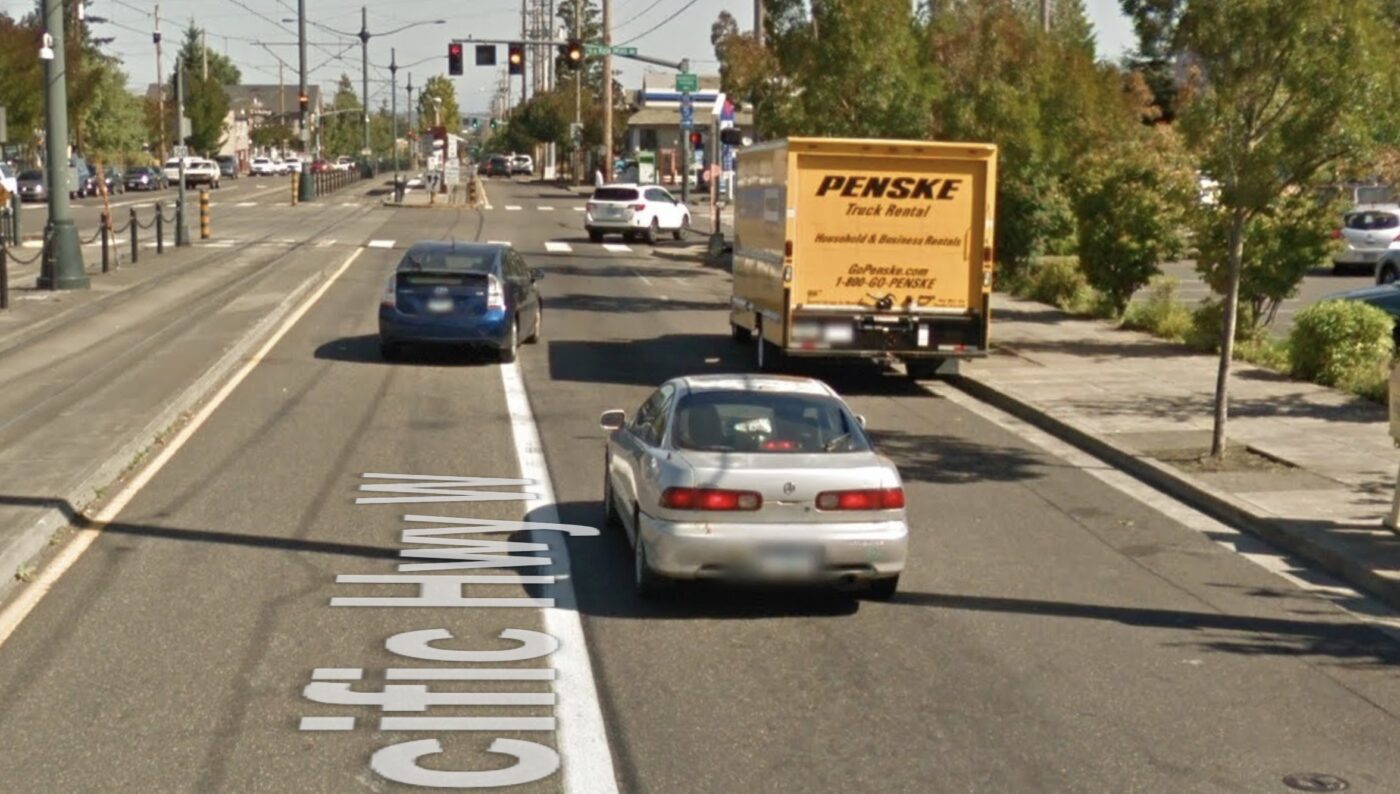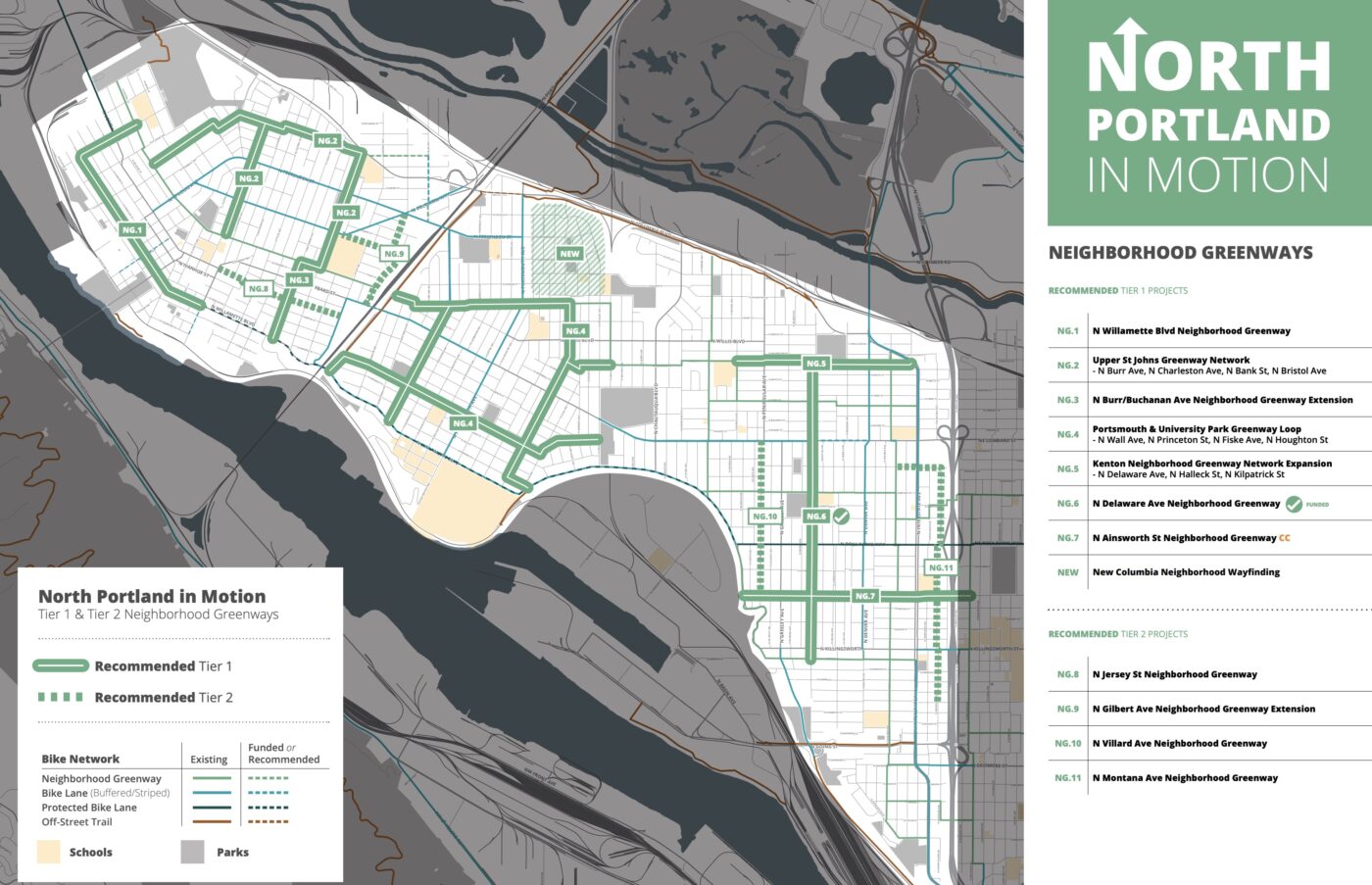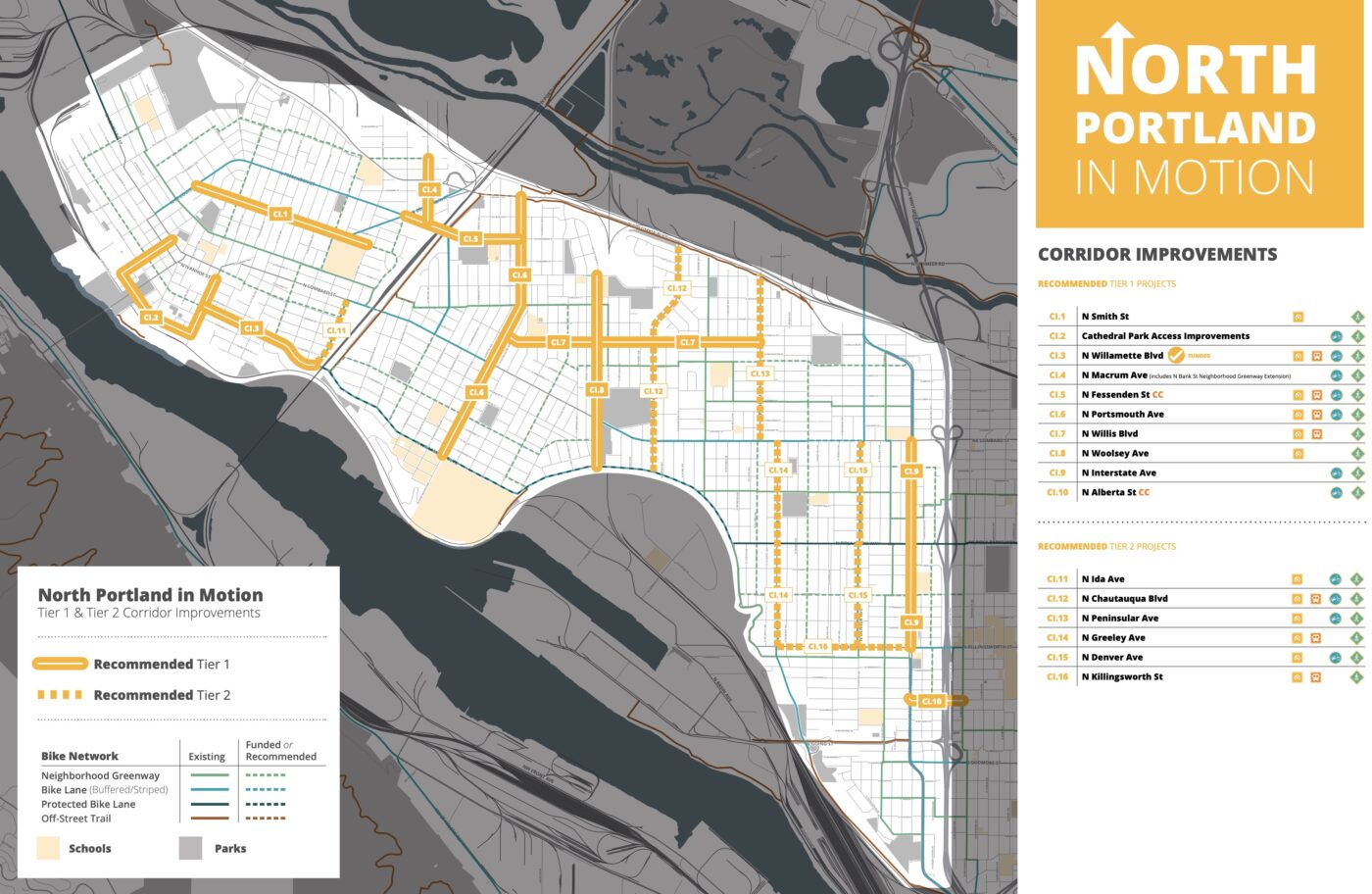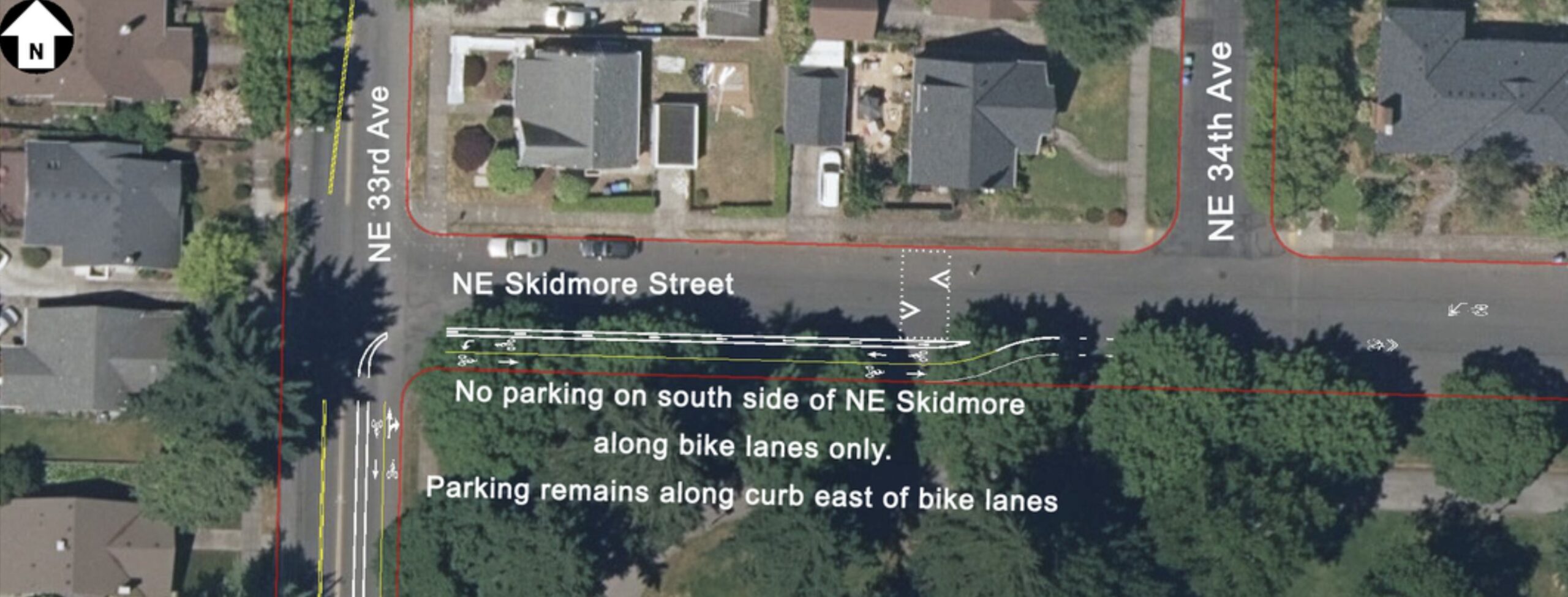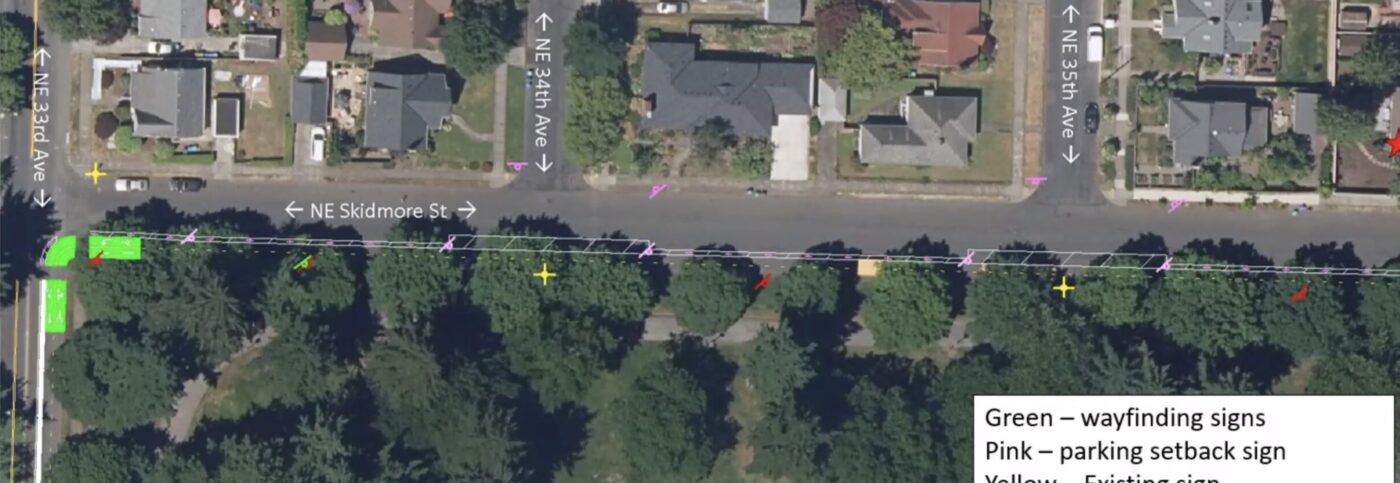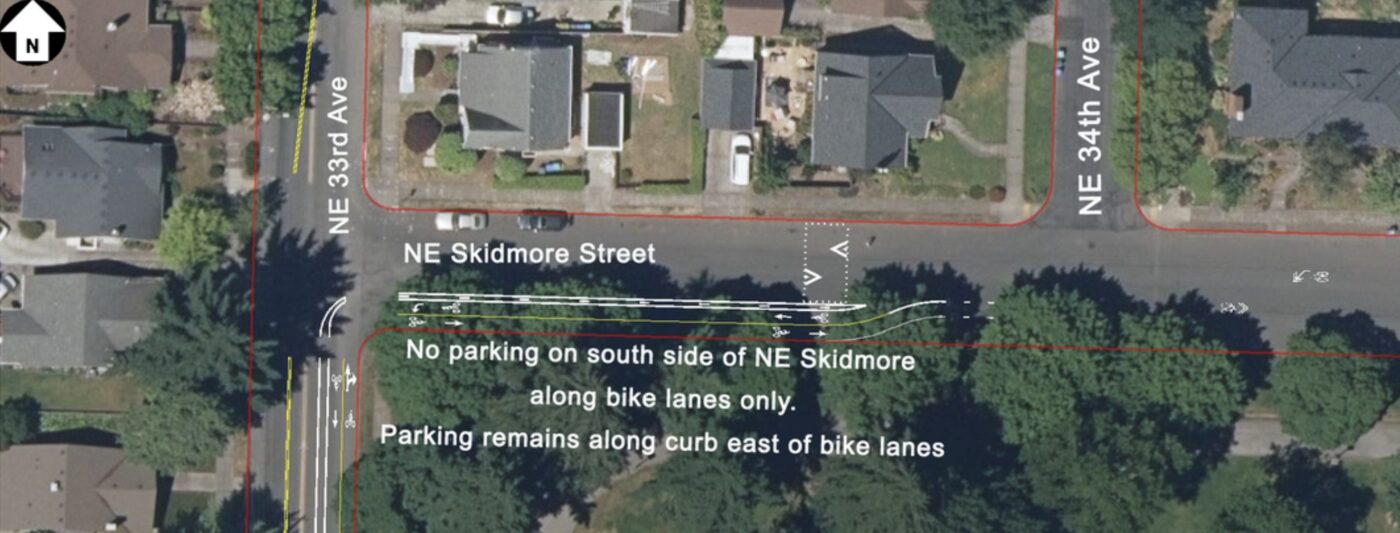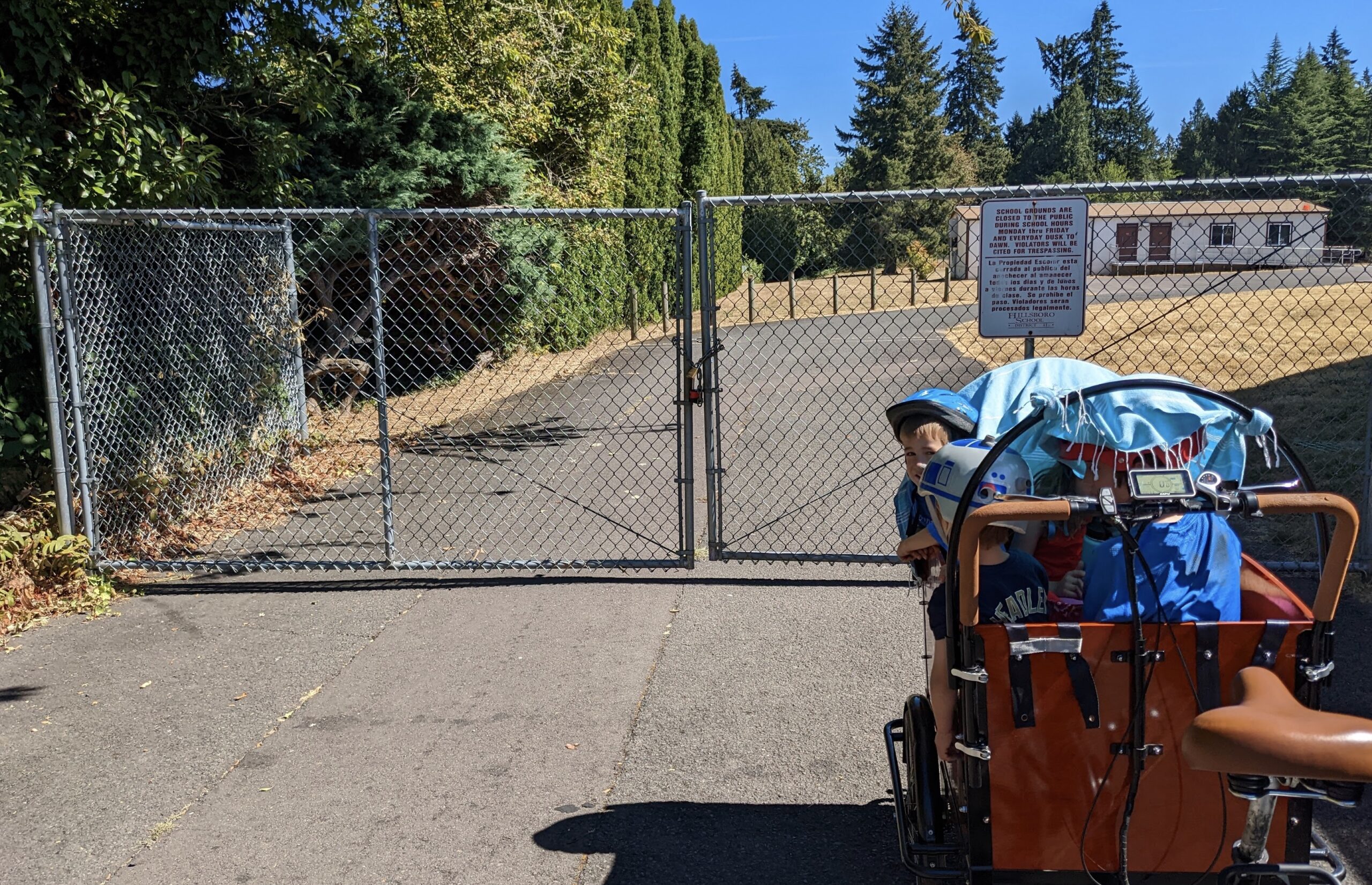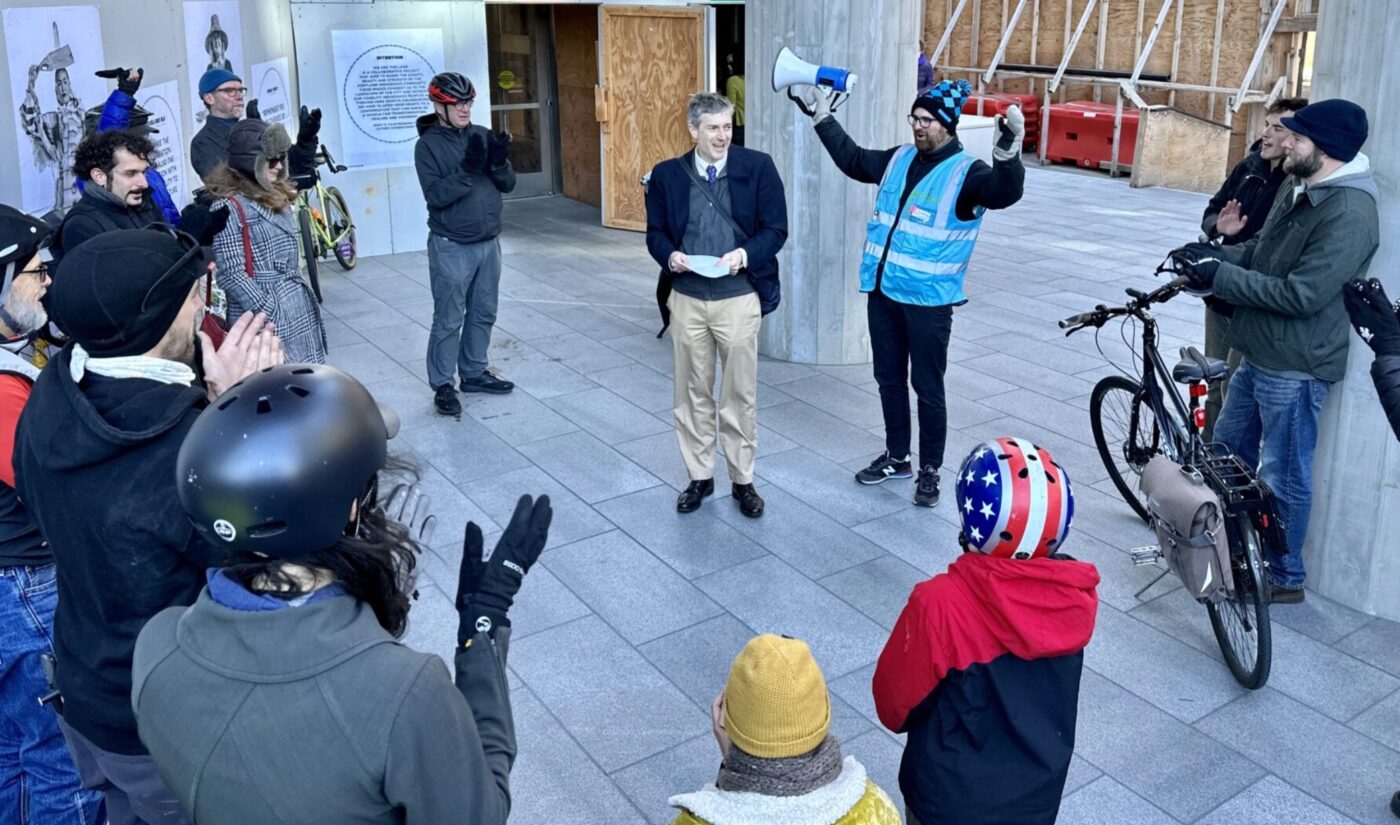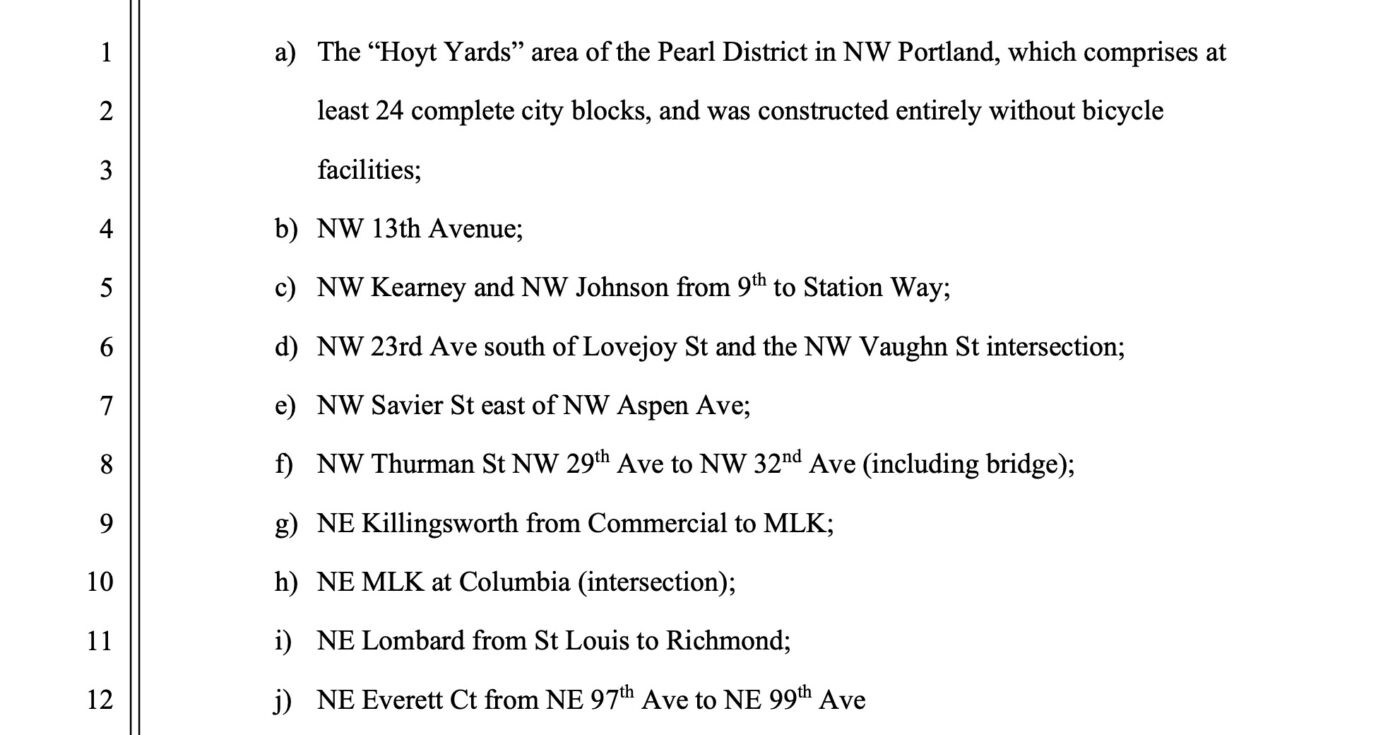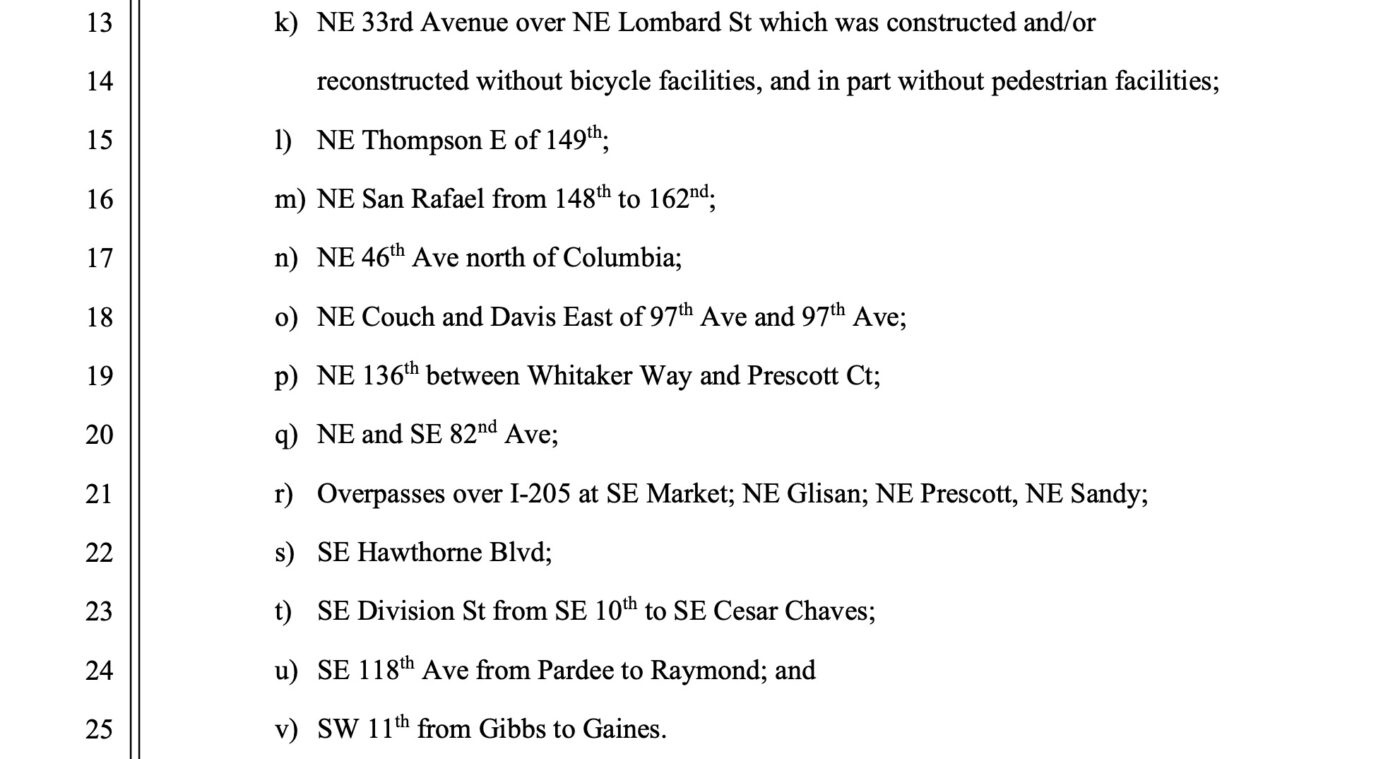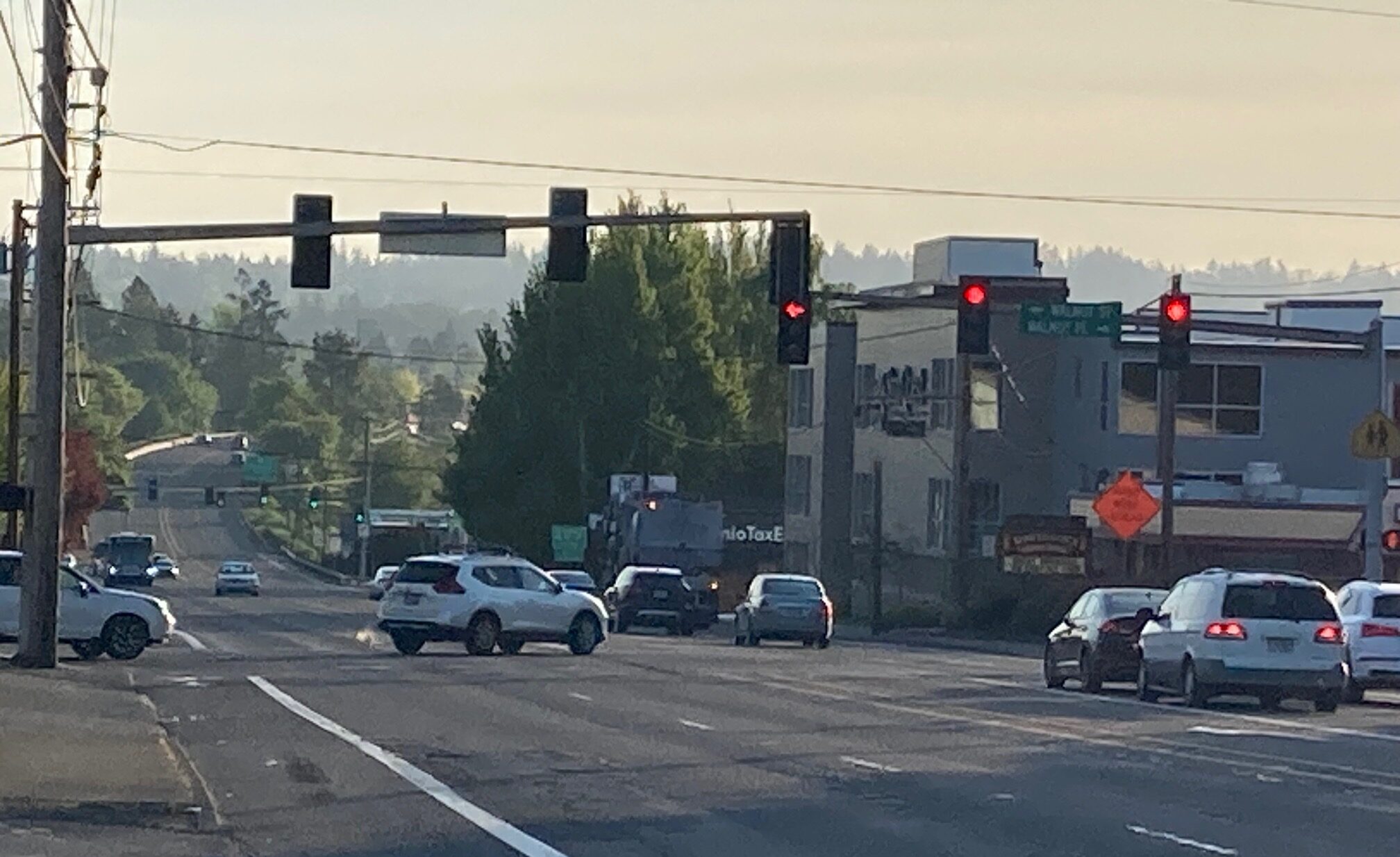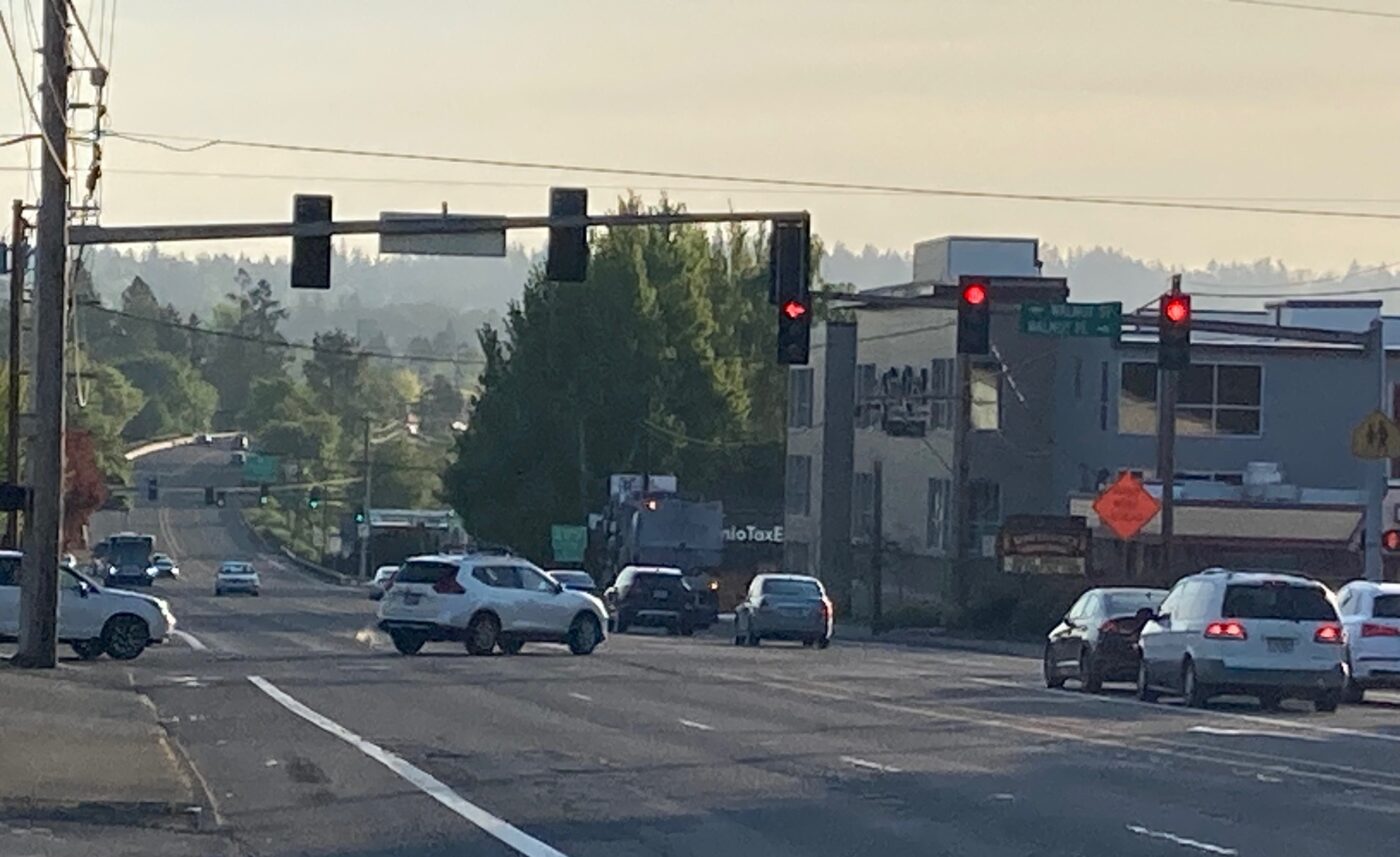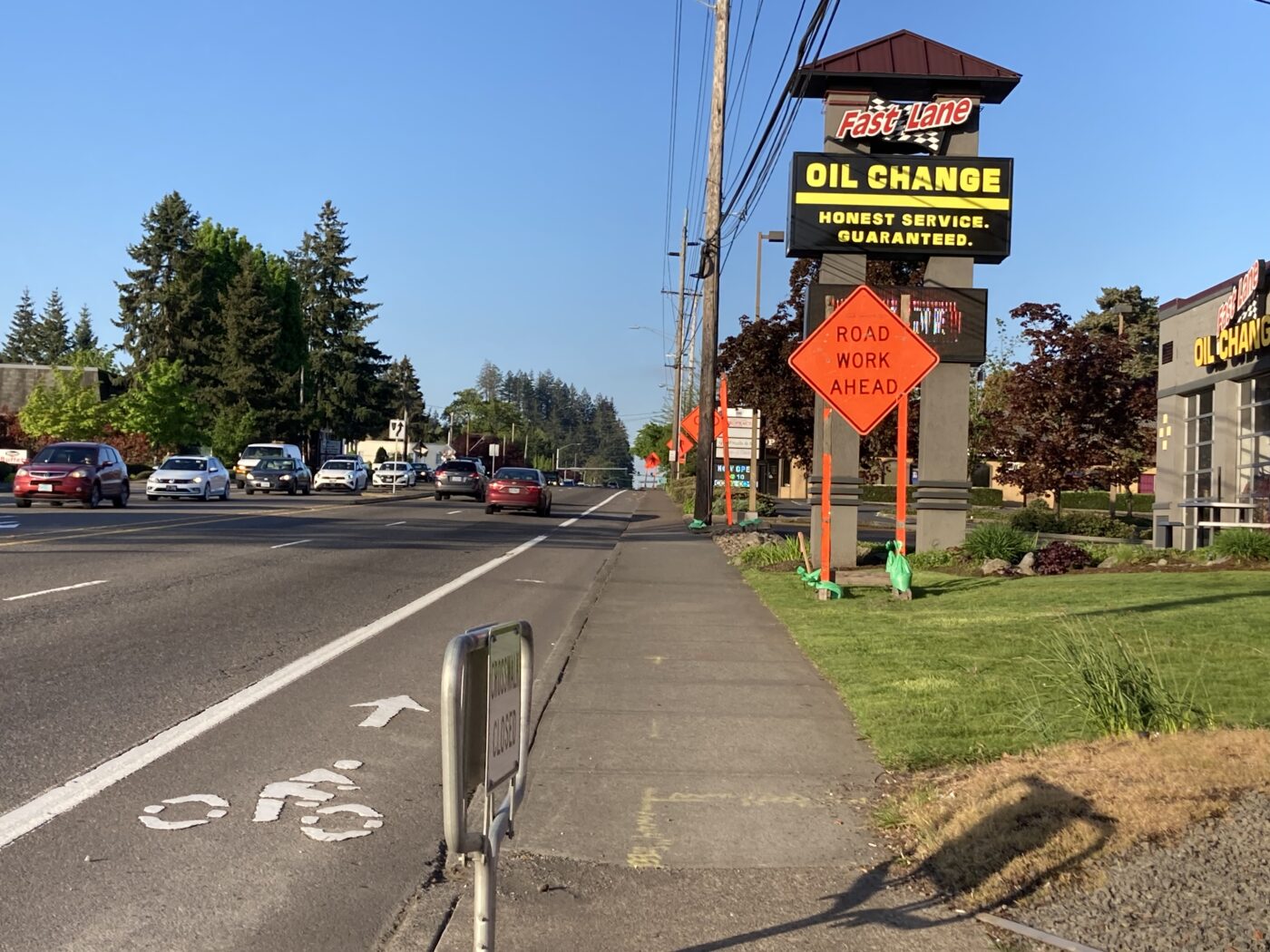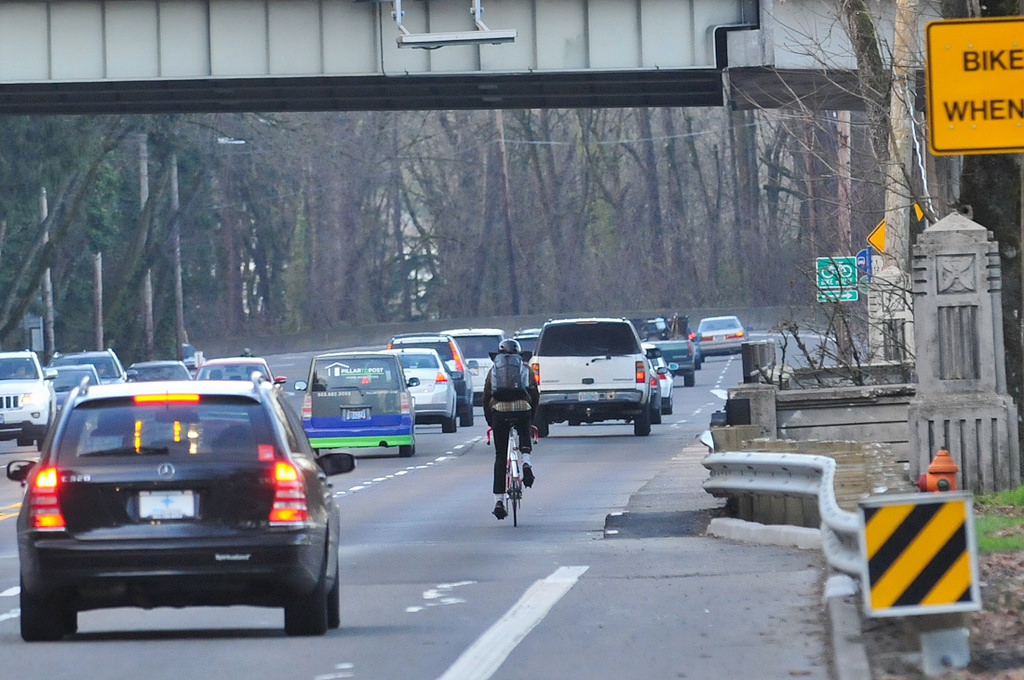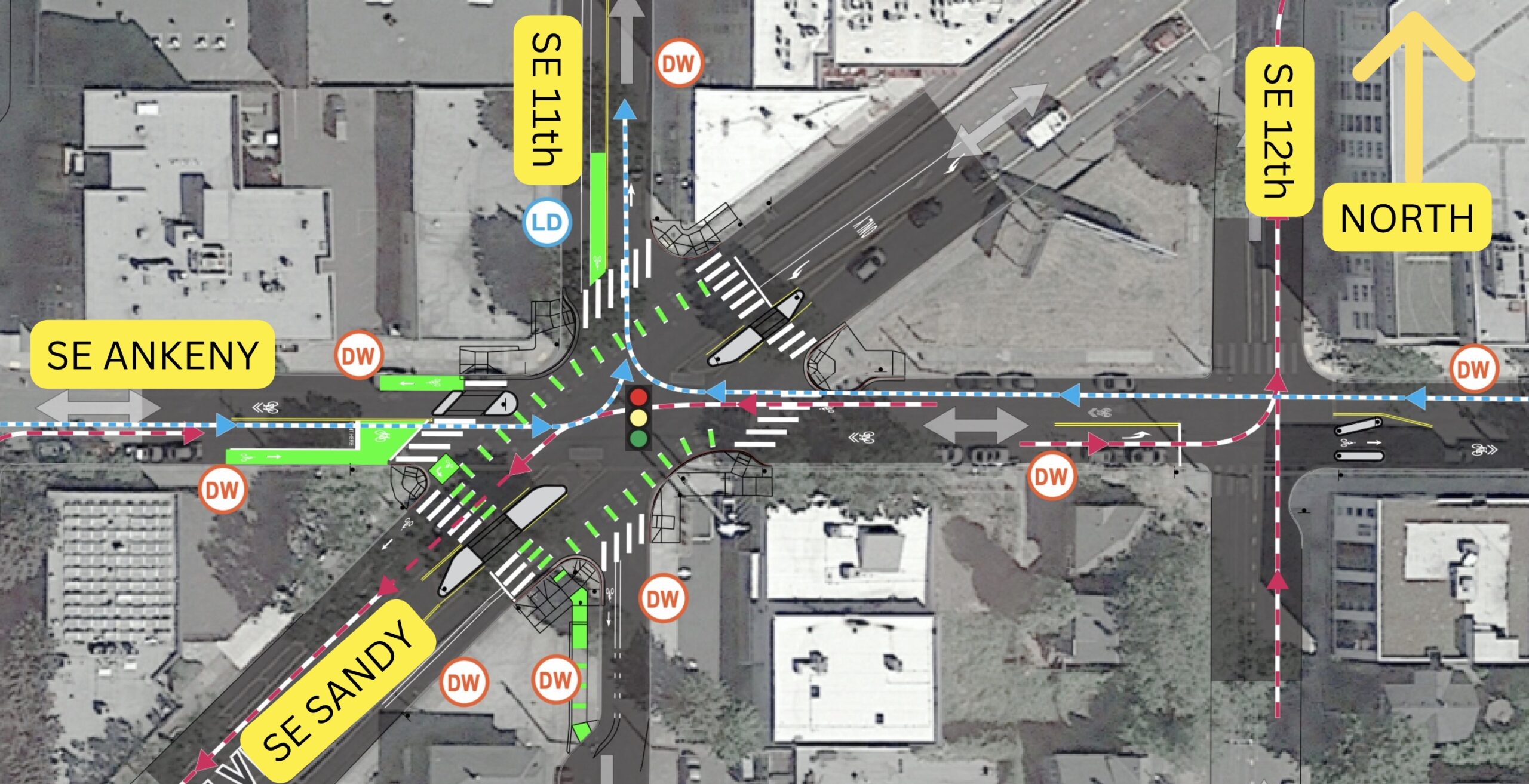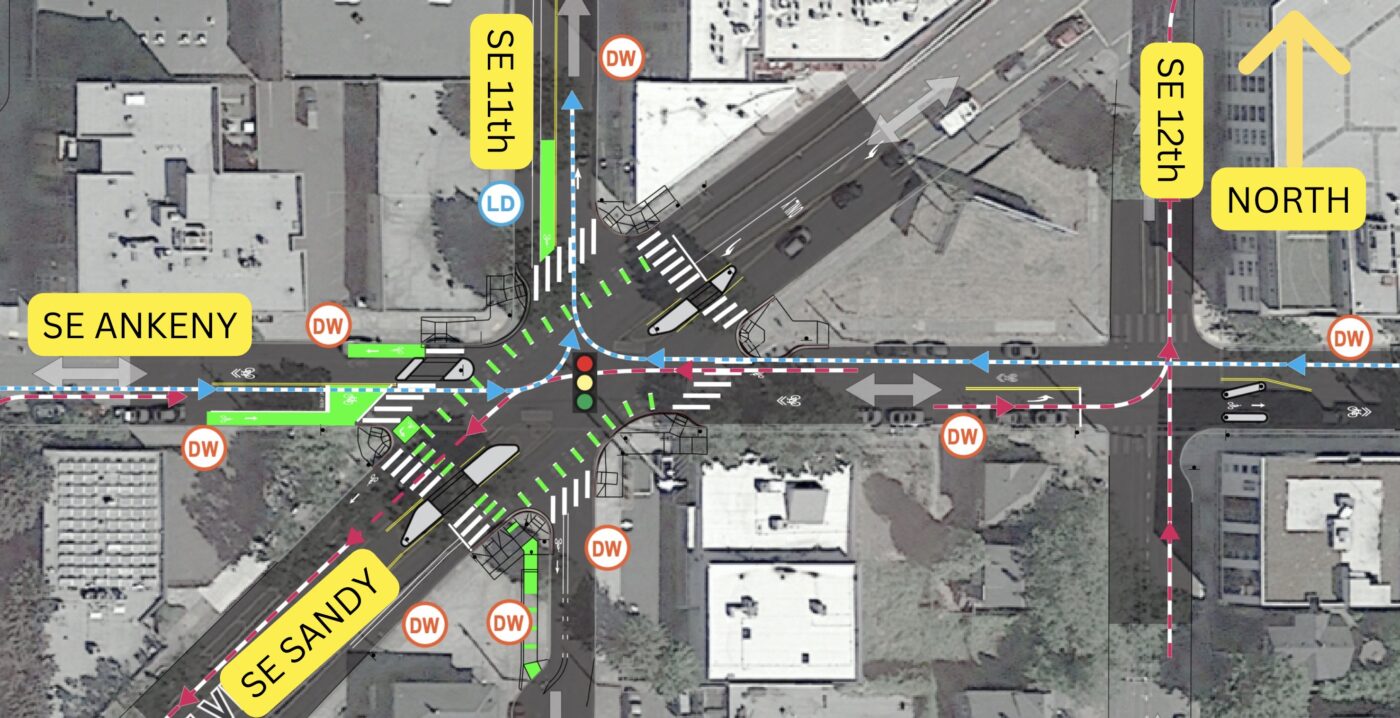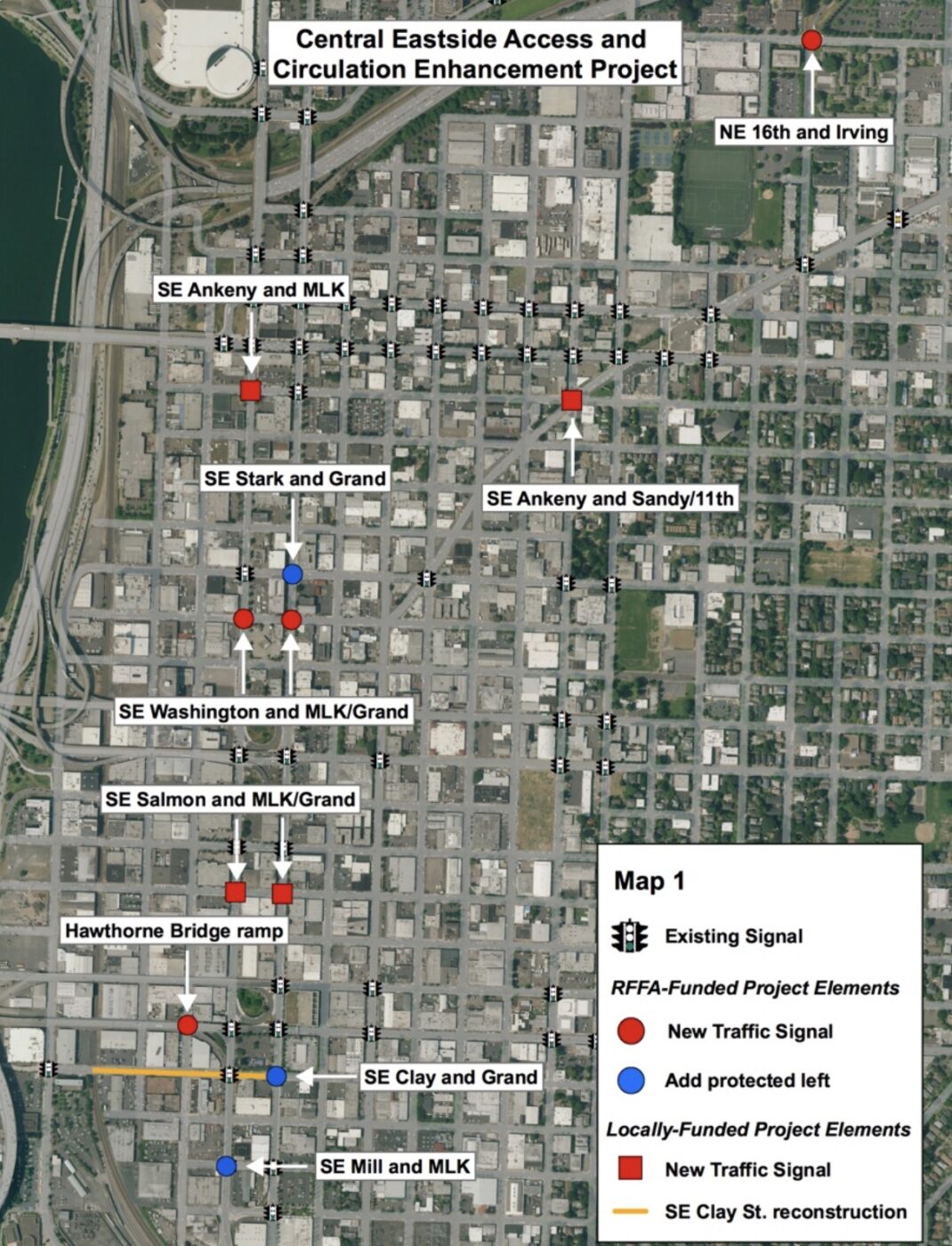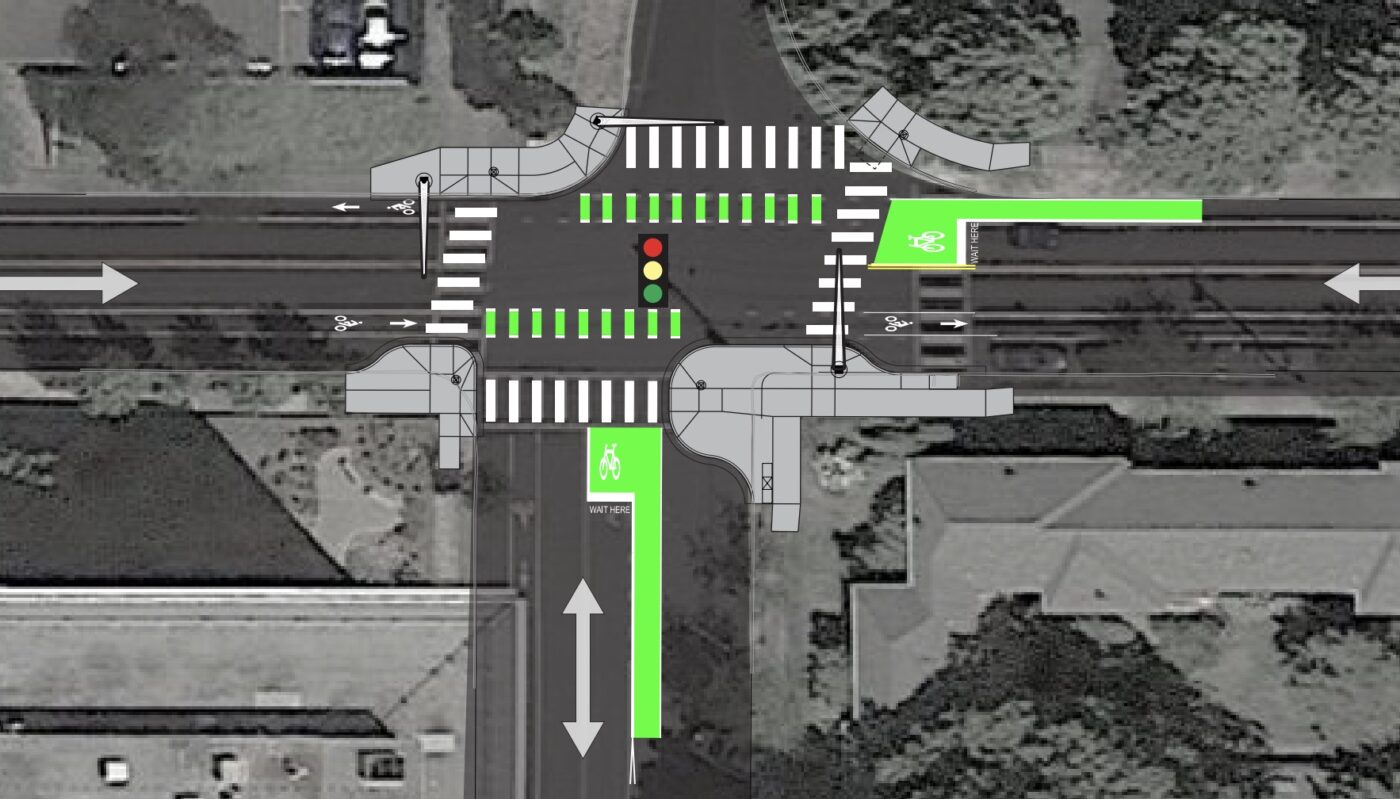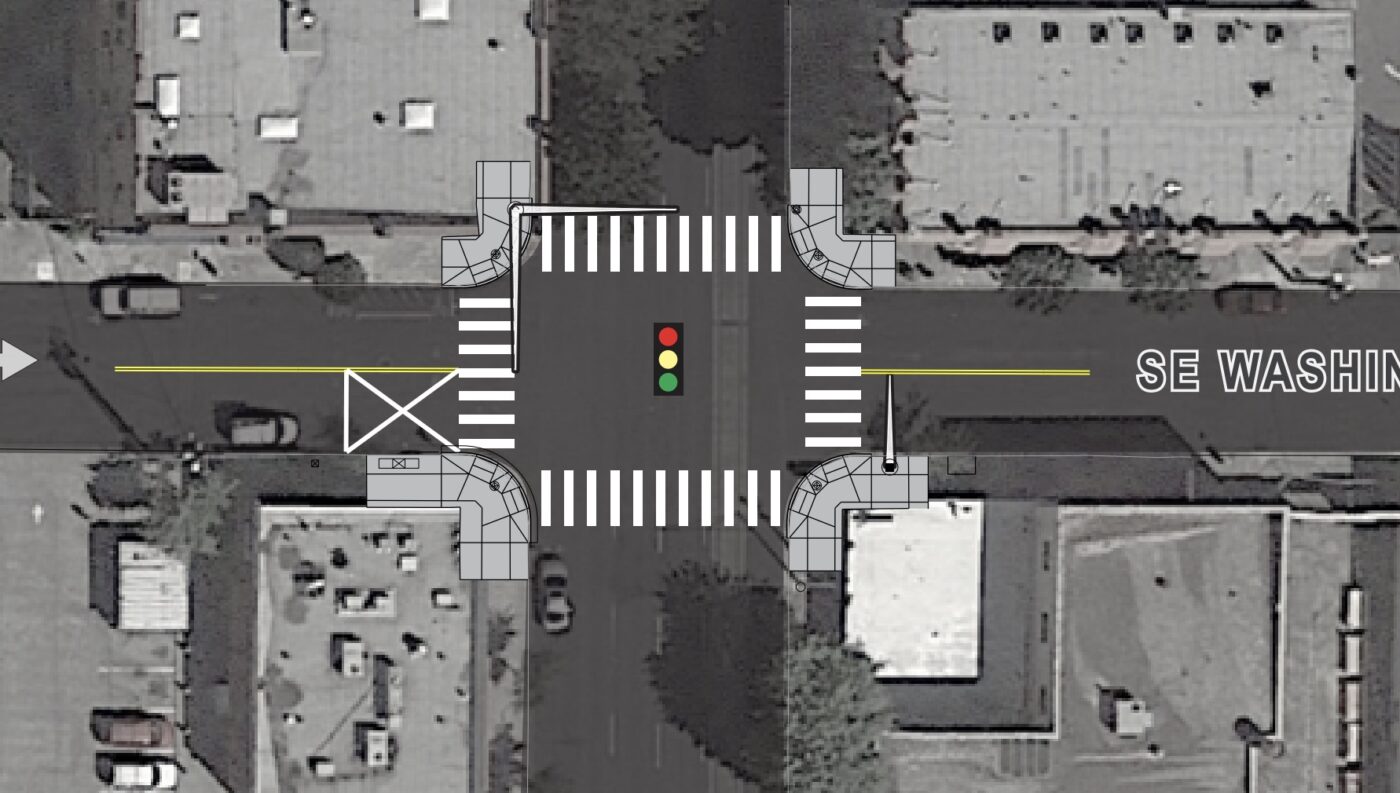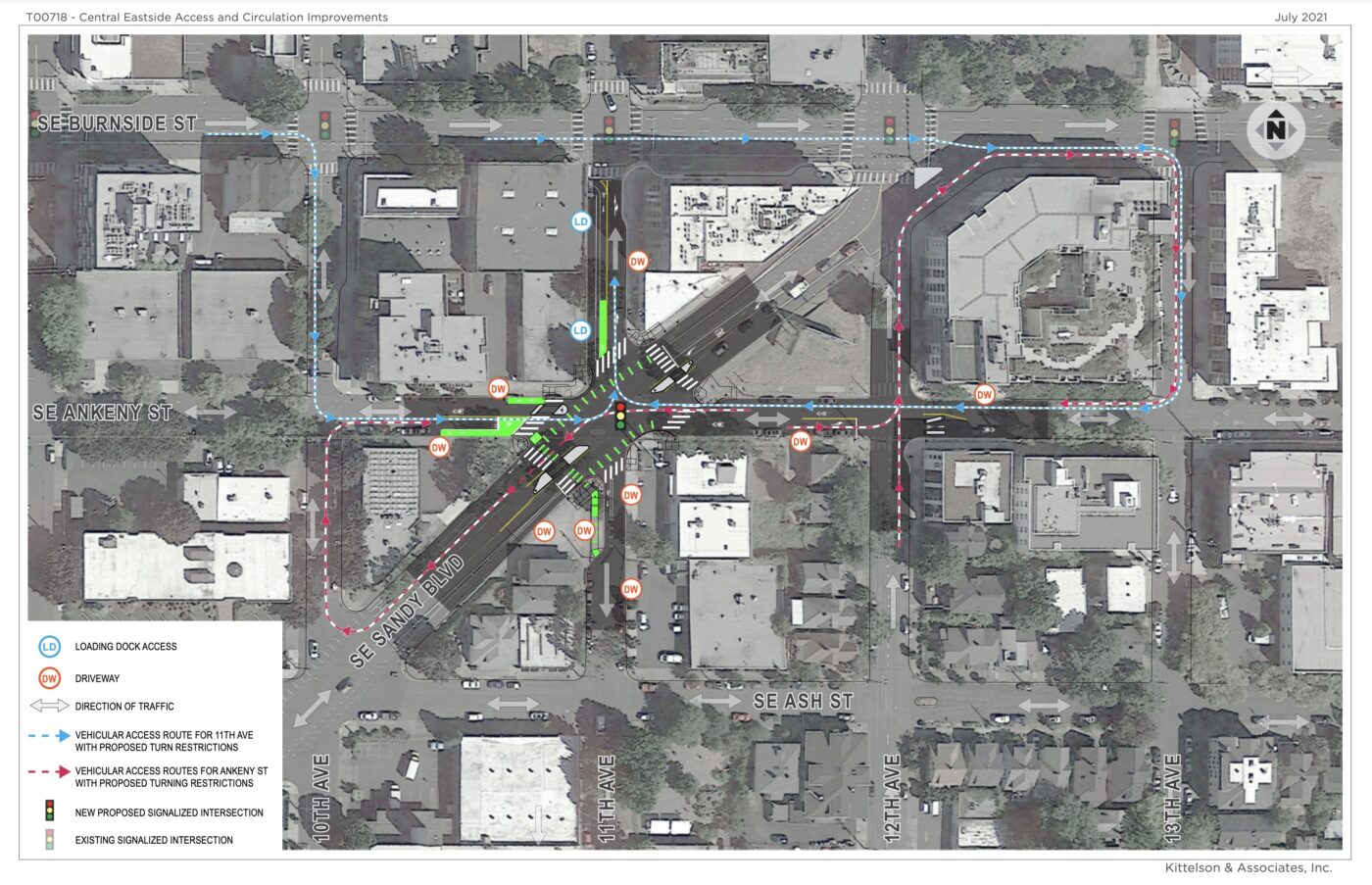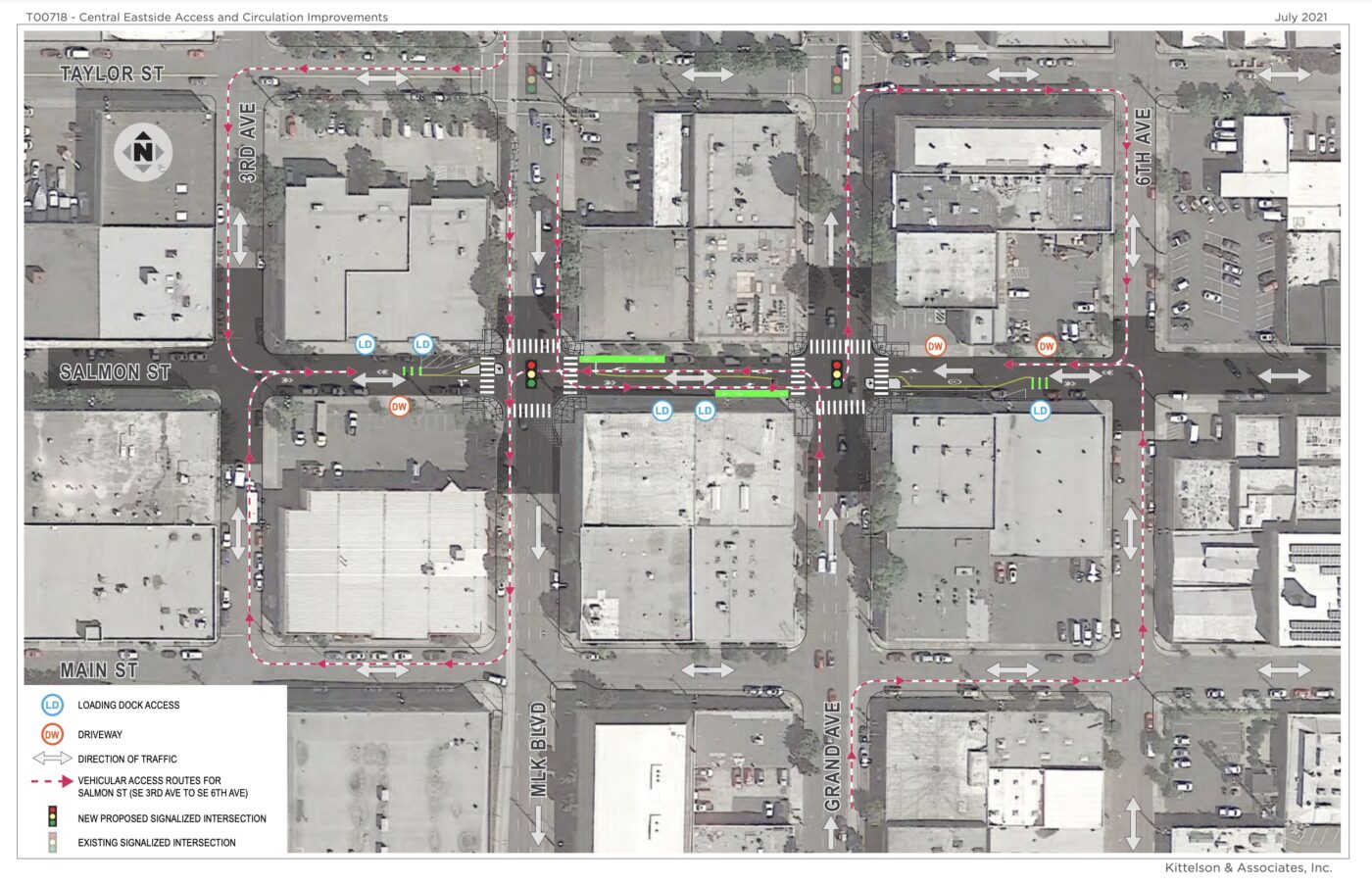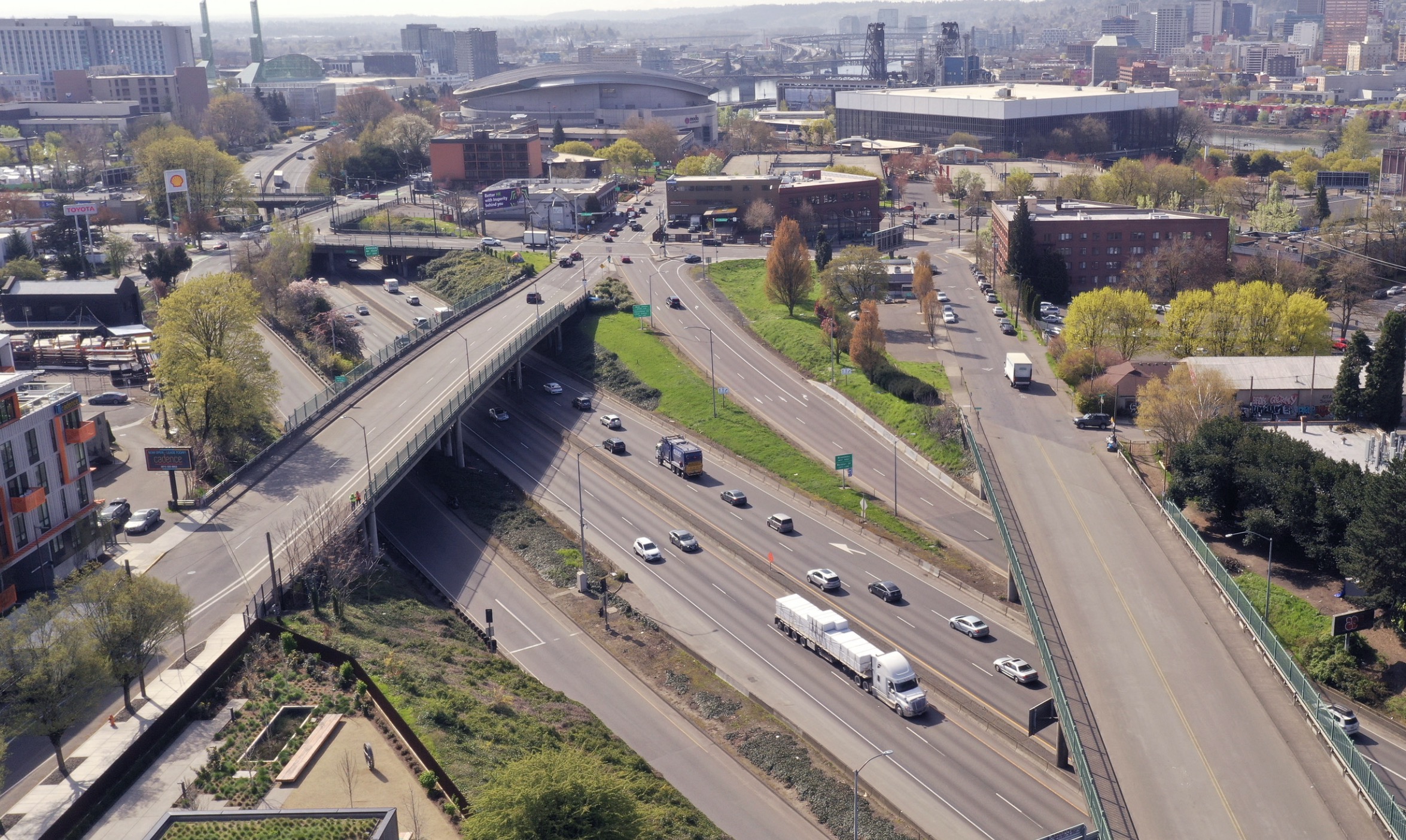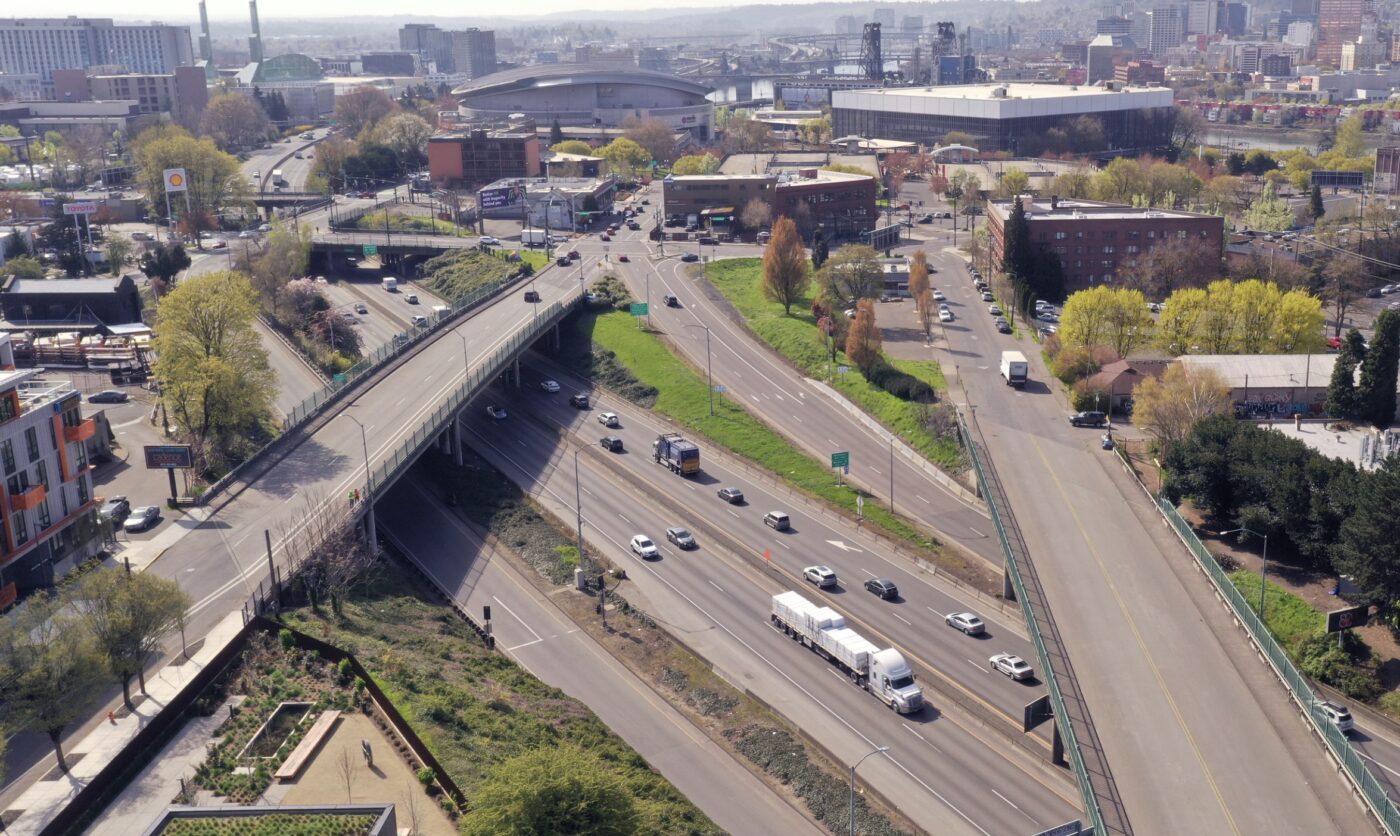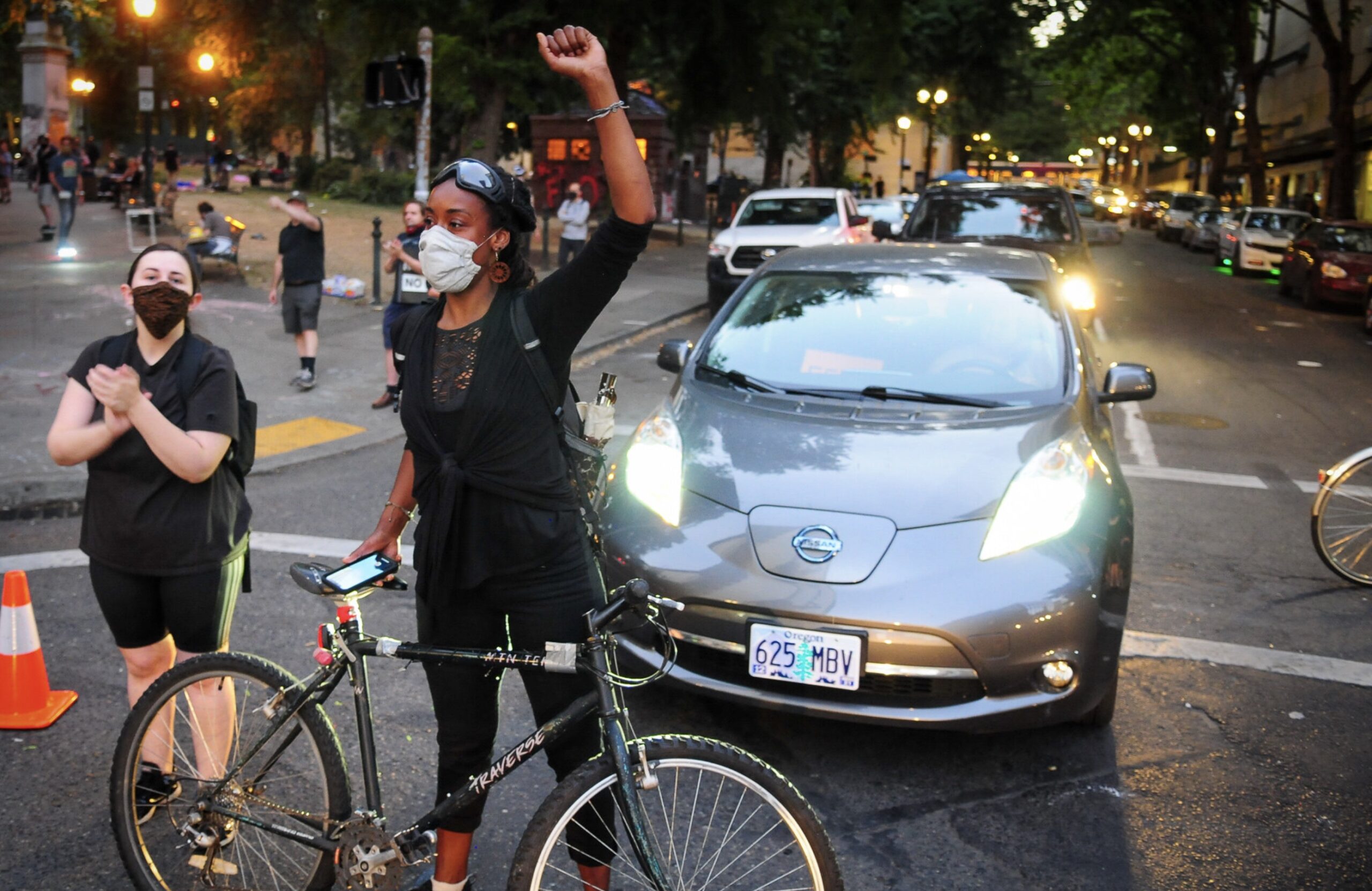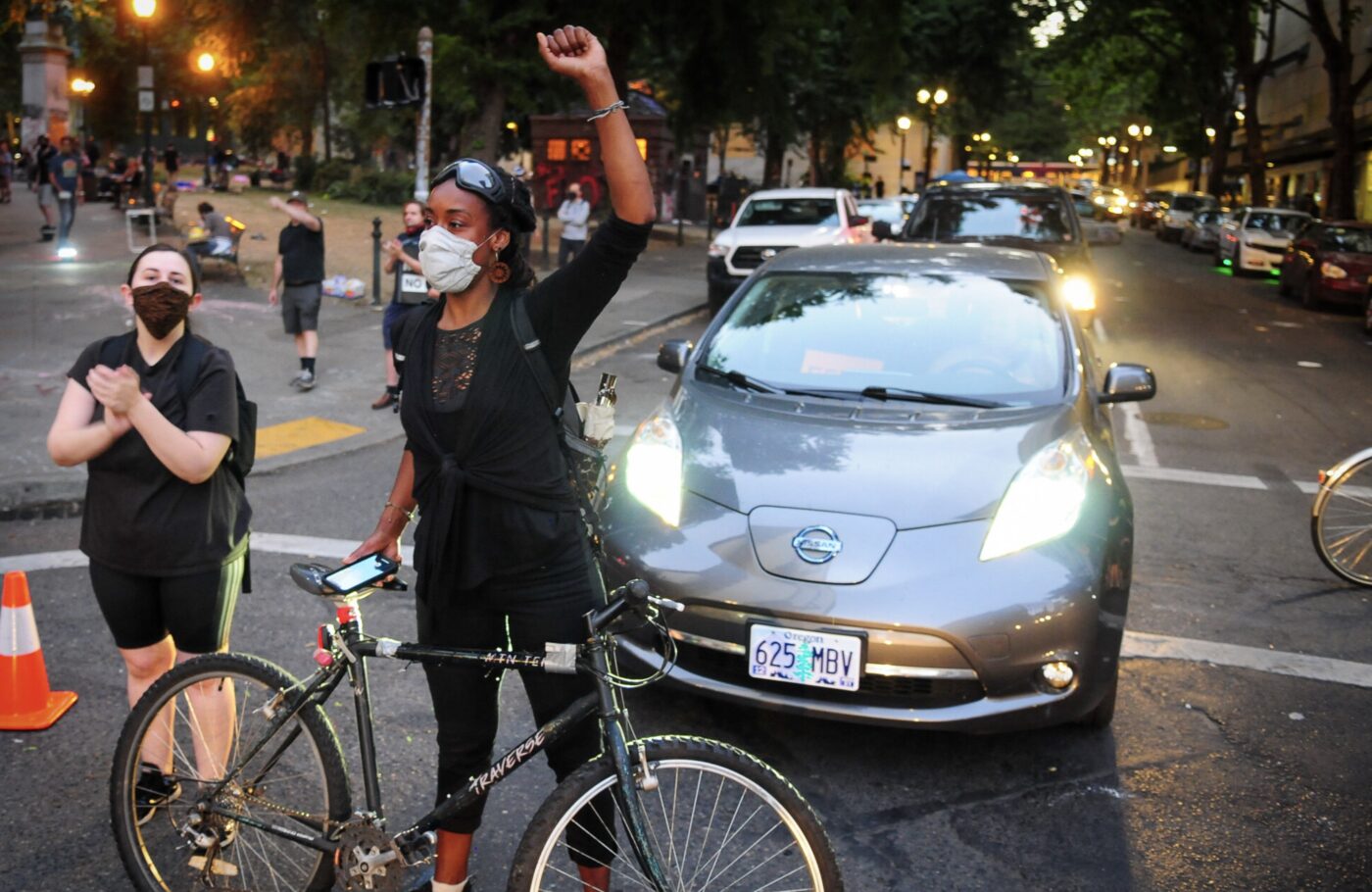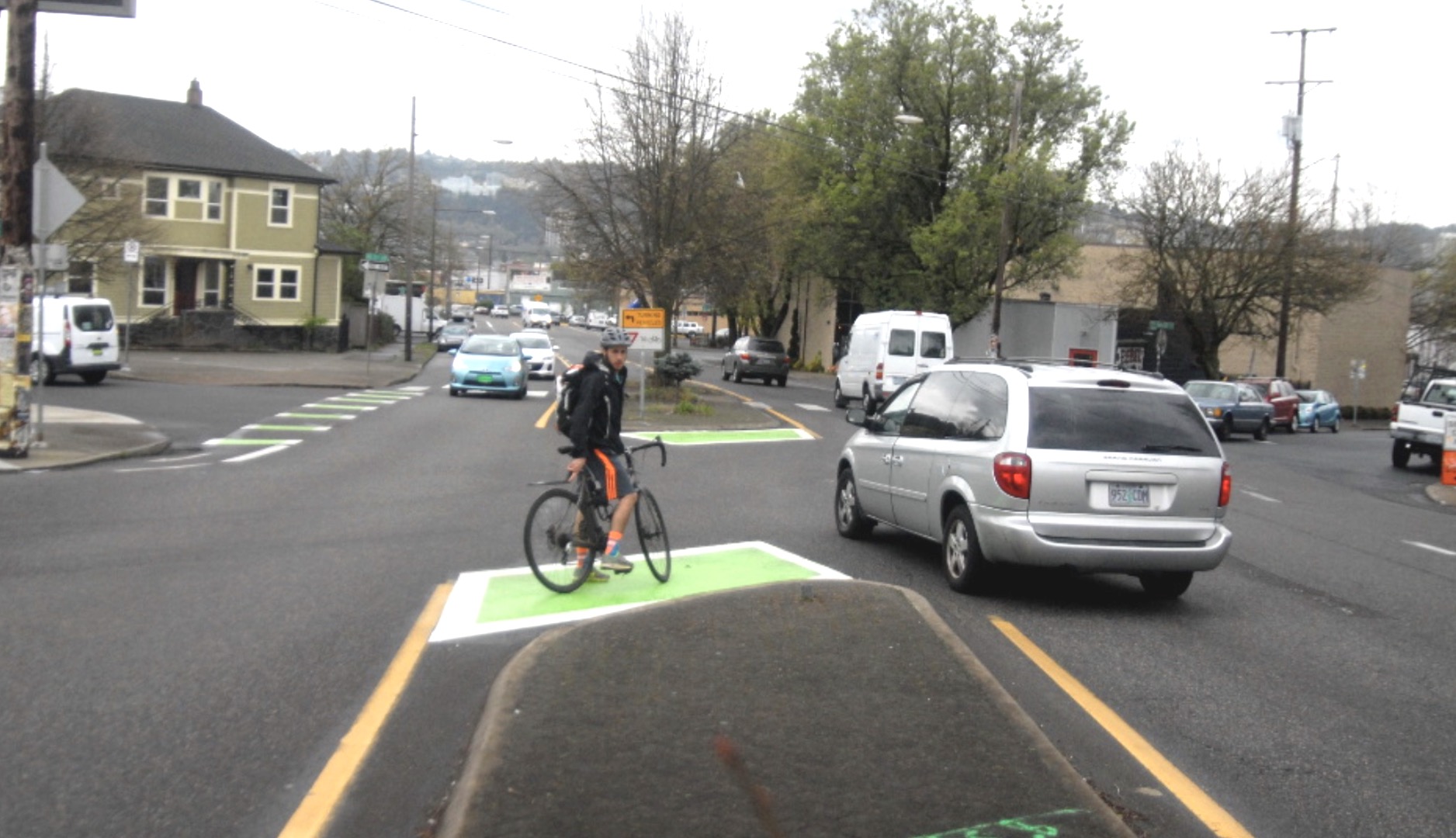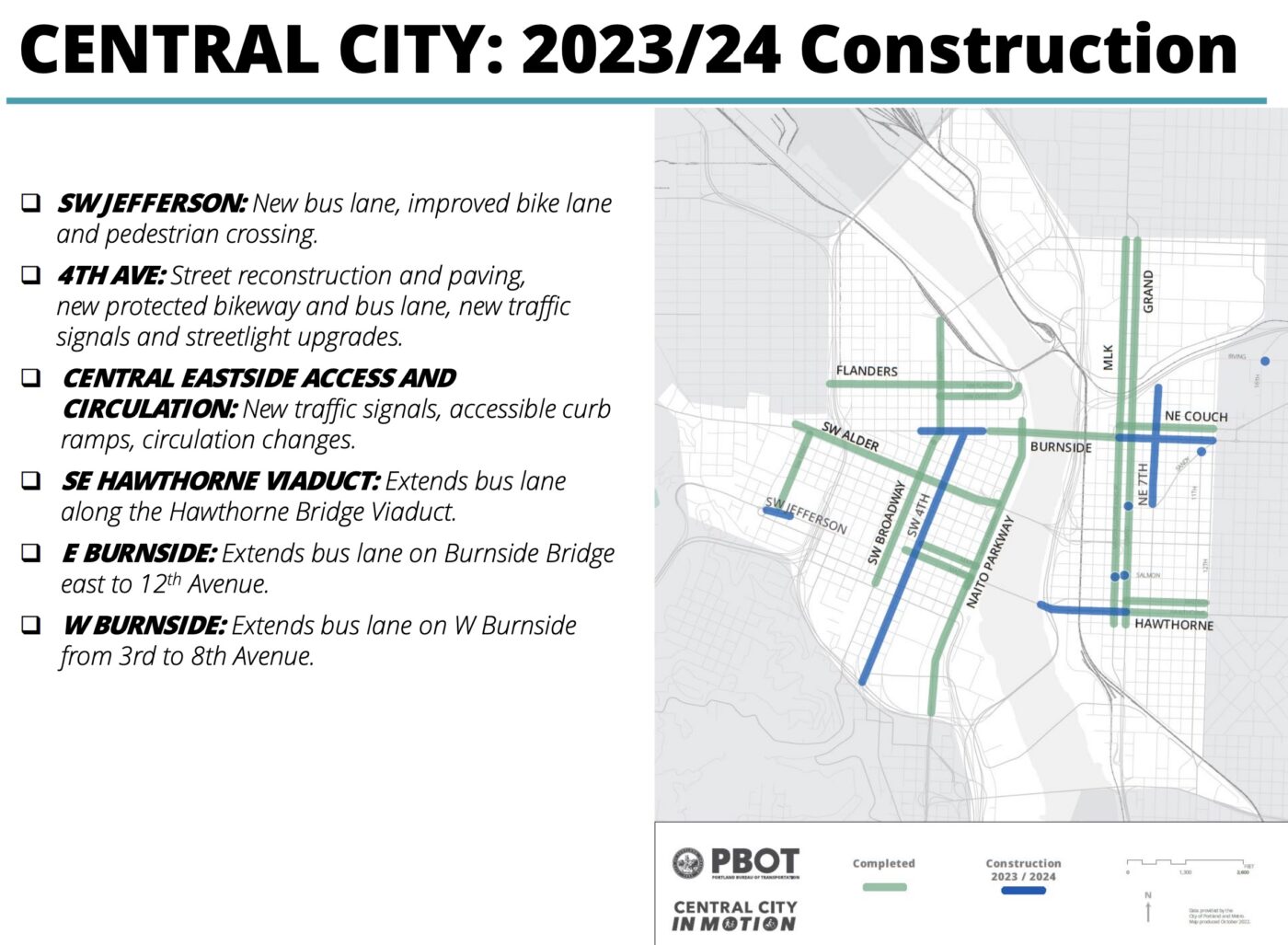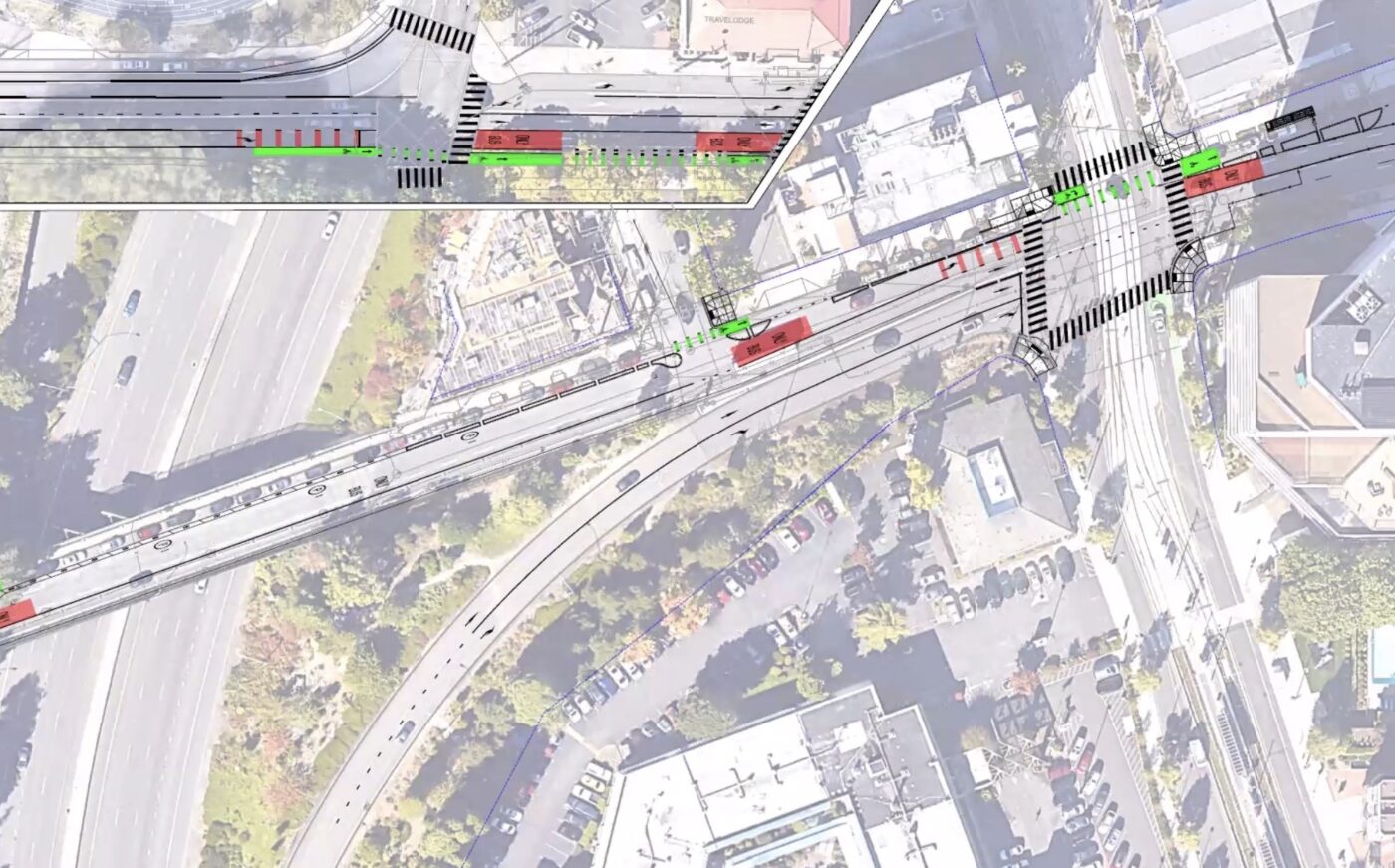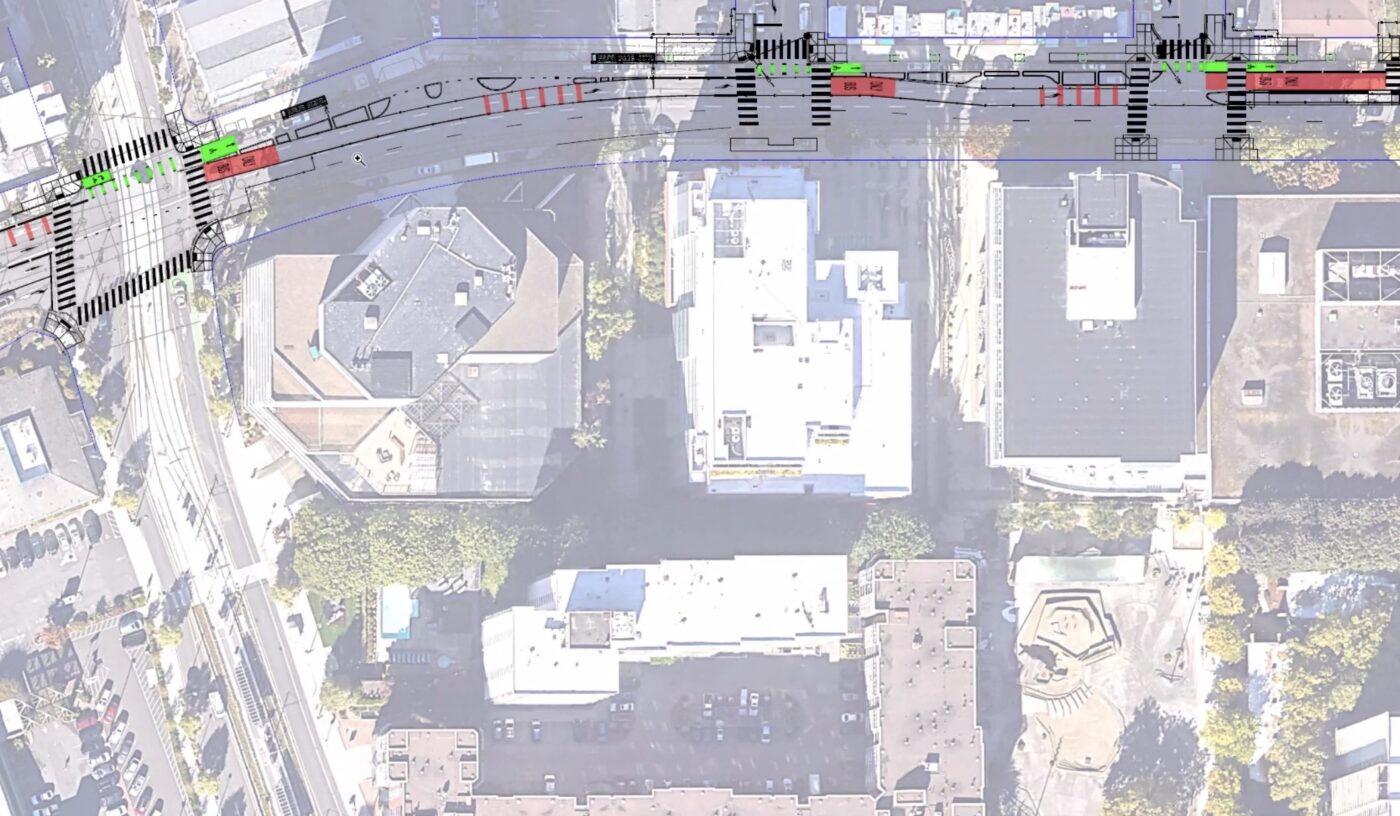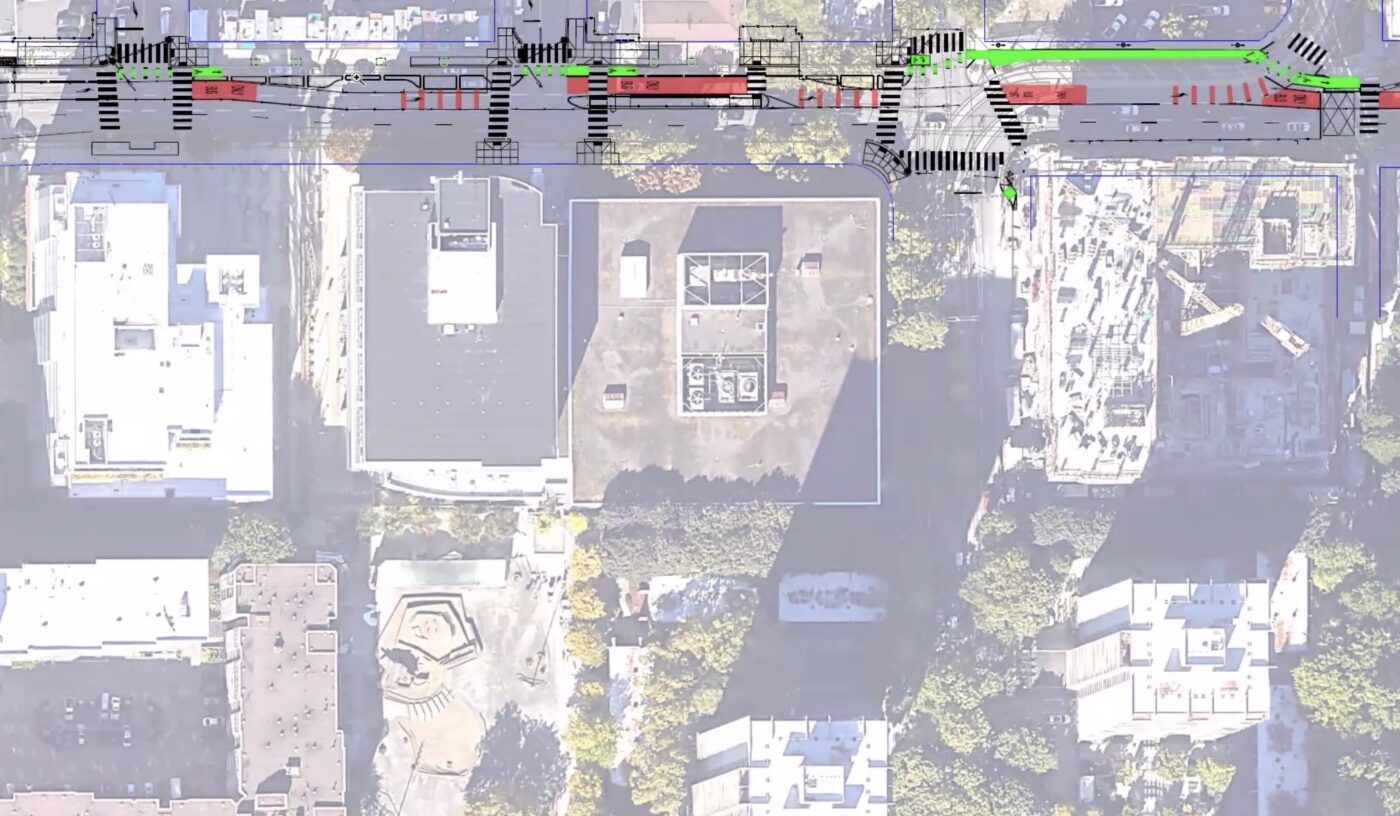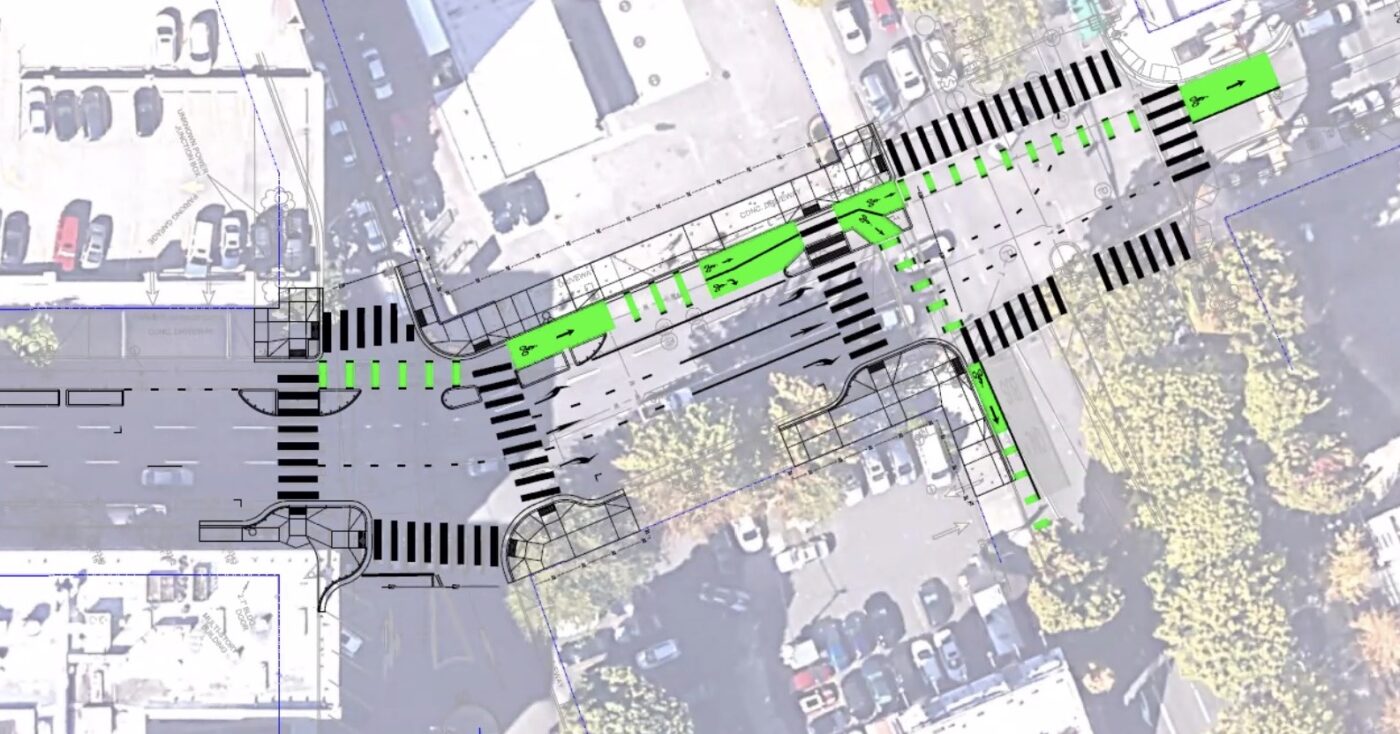The Portland Bureau of Transportation has released their recommendations for which neighborhood greenways and bike infrastructure improvements should be prioritized in north Portland. The recommendations were released Friday afternoon and are the culmination of two years of planning and public outreach for the North Portland in Motion plan. We first covered this plan in April 2021 and since then, PBOT project staff have led bike tours of the area, identified a number of projects, collected feedback, convened an advisory group, and more.
Now we’ve got seven solid new neighborhood greenway projects, 10 “corridor improvement” projects, and six public space projects to rally around and push toward completion. Like all of their “In Motion” plans (of which they’ve already completed in the central city, as well as east, southwest, and northwest Portland) there is not funding attached from the outset. The value of these plans is that they give PBOT and publicly vetted, “shovel-ready” list of projects that have a much better chance of actually being built when/if funding becomes available. They also give advocates clear organizing goals and leverage to create awareness and support for specific projects.
Here are the seven Tier 1 neighborhood greenway projects PBOT recommends (click project name for PBOT doc with more info):
- NG.1 – N Willamette Blvd Neighborhood Greenway: New neighborhood greenway on N Willamette Blvd and N Reno Ave provides a connection to Cathedral Park and Sitton Elementary.
- NG.2 – Upper St Johns Neighborhood Greenway: A bundle of new Neighborhood Greenways in the northern section of St Johns intended to fill major gaps in the network, including investments on N Charleston Ave. Provides a direct connection to George Middle School, James John School, St Johns Library, St Johns Farmers Market, and Downtown St Johns.
- NG.3 – N Burr Ave / N Buchanan Ave Neighborhood Greenway: A new neighborhood greenway providing a north/south walking and biking connection between N Willamette Blvd and N Columbia Blvd. This route connects a number of important neighborhood destinations including George Middle School, George Park, Roosevelt High School, and businesses on N Lombard St and N Willamette Blvd.
- NG.4 – Portsmouth & University Park Neighborhood Greenway Loop: A collection of new and upgraded Neighborhood Greenways building out a complete and comprehensive network in the Portsmouth and University Park neighborhoods. This collection of projects improves access to schools (Astor Elementary, Cesar Chavez Elementary) and parks (Columbia Park, Portsmouth Park, McKenna Park). It also provide access to New Columbia, the largest affordable housing development in the State of Oregon.
- NG.5 – Kenton Neighborhood Greenway Network Expansion: A bundle of new Neighborhood Greenways on N Delaware Ave, N Halleck St, and N Kilpatrick St intended to expand and improve the network in the Kenton Neighborhood.
- NG.6 – N Delaware Ave Neighborhood Greenway: A new neighborhood greenway on N Delaware Ave providing a calm and comfortable route for people walking and biking between Kenton and Overlook neighborhoods. This neighborhood greenway provides a direct connection to Chief Joseph Elementary and Arbor Lodge Park and fills a major north-south gap in bike network.
- NG. 7 – N Ainsworth St Neighborhood Greenway: A new neighborhood greenway on Ainsworth St connecting the greenway and bike lanes on Willamette Blvd with Interstate Avenue. This project would fill a key gap in the biking network between N Rosa Parks Way and Willamette Blvd, and provide direct access to Ockley Green Middle School.
These greenways would double the density of the bike-friendly street network in the northern peninsula of our city and provide key links to important destinations like parks, schools and commercial areas.
Along busier streets, PBOT categorizes the projects as “corridor improvements” where they plan to do things like speed limit reductions, lane reconfigurations, transit access improvements, and so on. Here are the 10 Tier 1 corridor improvement projects they recommend:
- CI.1 – N Smith St: This project would improve and enhance existing pedestrian crossings at new Neighborhood Greenways, update existing all-way stops and median island crossings with improved crosswalks, and make minor changes to improve the existing buffered bike lanes. This project recommends continued investment in traffic calming to reduce speeds, monitoring, and evaluation.
- CI.2 – Cathedral Park Access Improvements: This collection of projects would invest in basic safety investments to improve access for people walking and biking between the waterfront area of Cathedral Park and Downtown St Johns.
- CI.3 – N Willamette Blvd: This project would implement lower-cost elements of the federally funded Willamette Blvd Active Transportation Corridor scheduled for construction in 2025-2026. These near-term improvements would include new marked crosswalks, improved bus stops, and new buffered bike lanes from N Alma Ave to N Richmond Ave.
- CI.4 – N Macrum Ave (St Johns): This project would add on-street parking, street trees, and high-quality buffered bike lanes connecting to bike routes on N Fessenden St and N Columbia Way. Additionally, this project would add a new crossings at N Columbia Way and N Fessenden St and include safety improvements at the existing signalized intersection of N Columbia Blvd.
- CI.5 – N Fessenden St: This project would add additional crossings, make safety improvements to the wide intersection at N Wall Ave, and reconfigure the roadway to provide a protected bike lane connecting St Johns and Portsmouth.
- CI.6 – N Portsmouth Ave: This project would add traffic calming and speed reader boards to reduce speeds on the corridor. It would also improve existing crossings and add new median island pedestrian crossings to help people get across the street, and upgrade the existing narrow striped bike lane to a buffered and/or protected bike lane.
- CI.7 – N Willis Blvd: This project would fill in the remaining sidewalks gaps, improve ADA access, improve existing crossings, add new speed bumps, and add additional safe pedestrian crossings. This corridor serves both TriMet Line 4 and Line 35 buses and PBOT will work with TriMet on bus stop improvements at higher ridership locations.
- CI.8 – N Woolsey Ave: This project would add traffic calming and new crossings to improve safety for people walking and biking and encourage slow, safe vehicles speeds. Though not intended to meet neighborhood greenway standards, these improvements would improve safety and comfort of people biking on this street.
- CI.9 – N Interstate Ave: This project would leverage an upcoming paving project to improve and extend the bike lane to reduce or close a major gap in the bikeway network. In collaboration with our partners at TriMet and ODOT, this project would also explore ways to improve the safety of people crossing at major intersections, many of which have high volumes of pedestrian activity for people accessing businesses and the MAX stations.
- CI.10 – N Alberta St: This project redesigns the layout of N Alberta St to provide a separated, comfortable bike lane connection between N Interstate Ave and the N Michigan Ave Neighborhood Greenway. Furthermore, this project would add bike boxes and no-turn-on-red at the signalized intersection at N Interstate Ave to reduce conflicts and improve pedestrian and bike safety.
There is so much to be excited about with many of these projects! Some of them (Ainsworth greenway! N Interstate!) are a long time coming and it’s great to see recognition from PBOT that they need help. In addition to the projects above, PBOT has recommended public space/public plaza projects at the St. Johns Plaza in downtown St. Johns, a mural on N Charleston Ave (in partnership with James Johns Elementary), a mural in Kenton, a plaza in Arbor Lodge Park and a mobility hub at University of Portland.
From here, the official recommendations will be shared in an online open house, then there will be a final public comment period this summer along with some community walks and rides to finalize the list. Then I assume there will be a date for official adoption at Portland City Council this fall.
Thanks to all the advocates and city staff who worked on getting things to this point. Can’t wait to report on many of these coming to fruition in the months and years to come. Let’s go north Portland!
Learn more about all the projects here.


